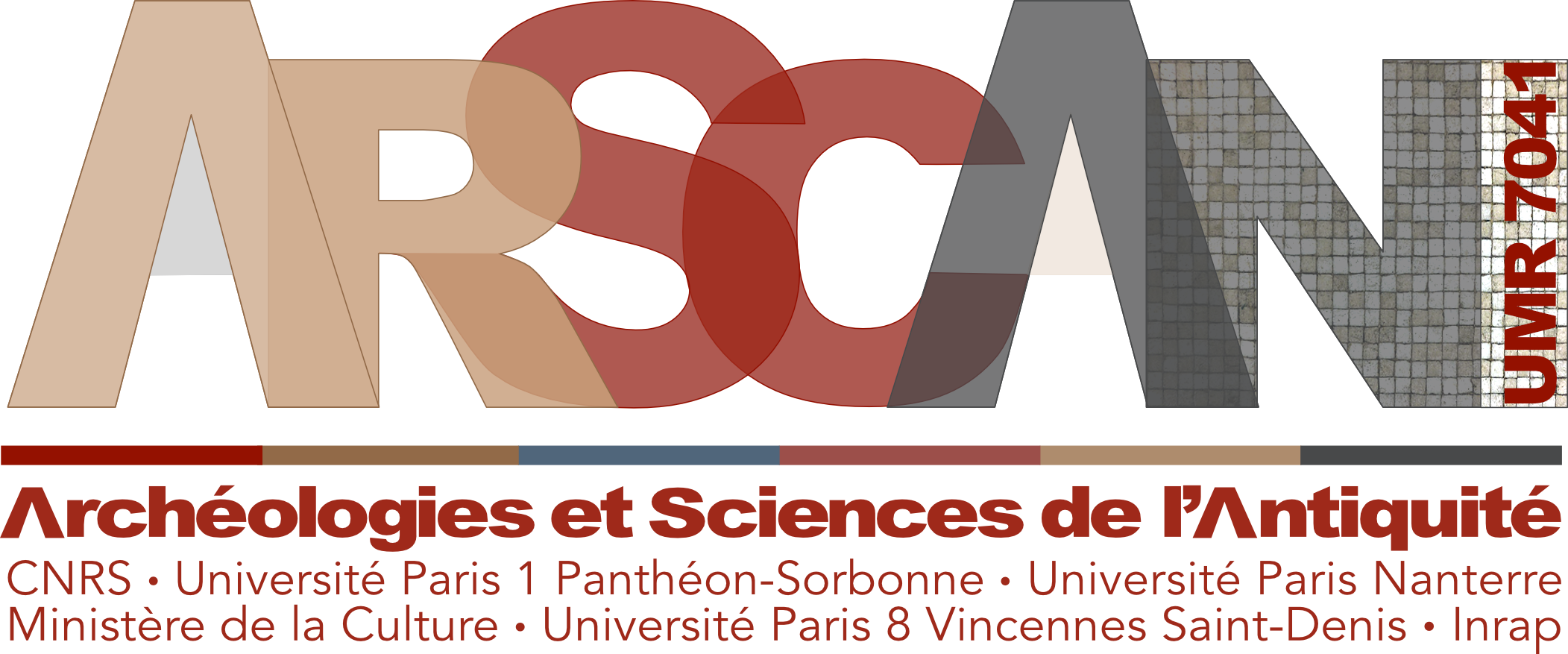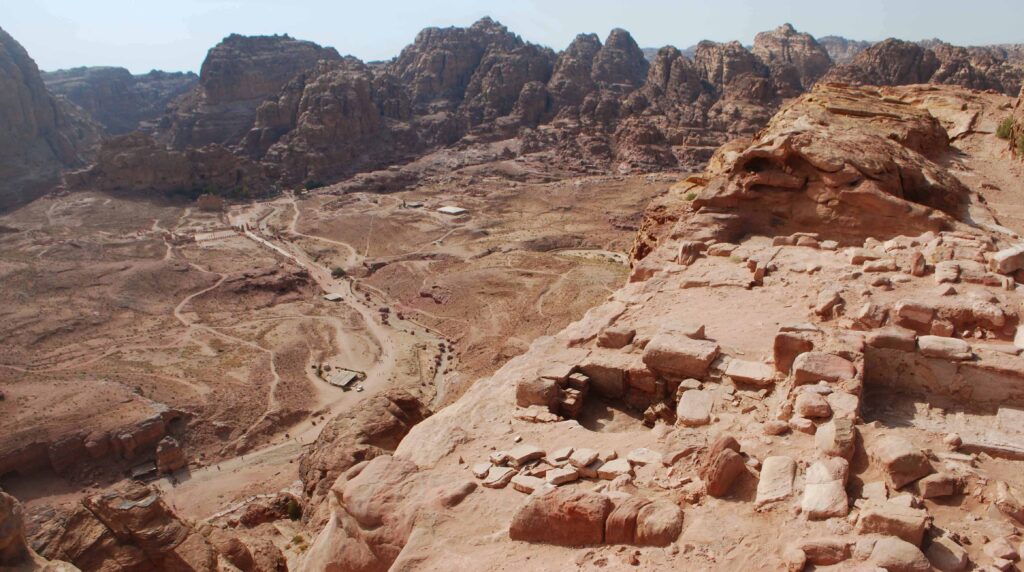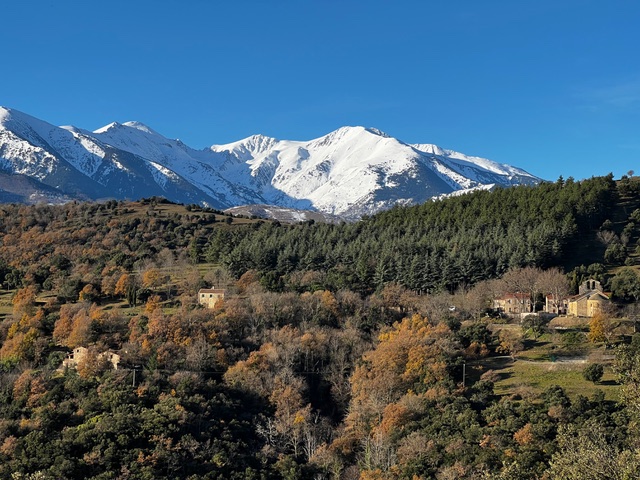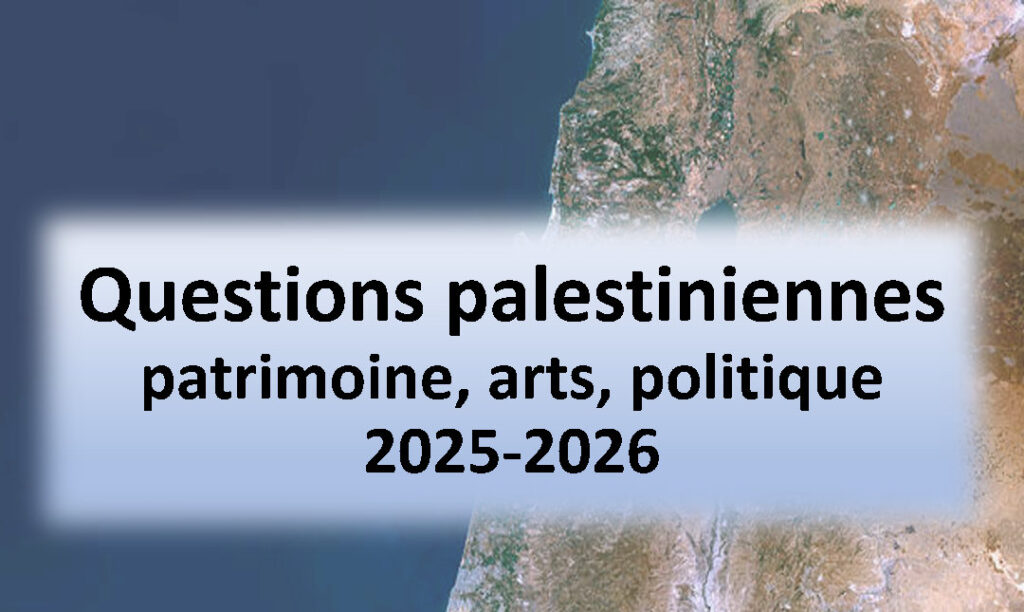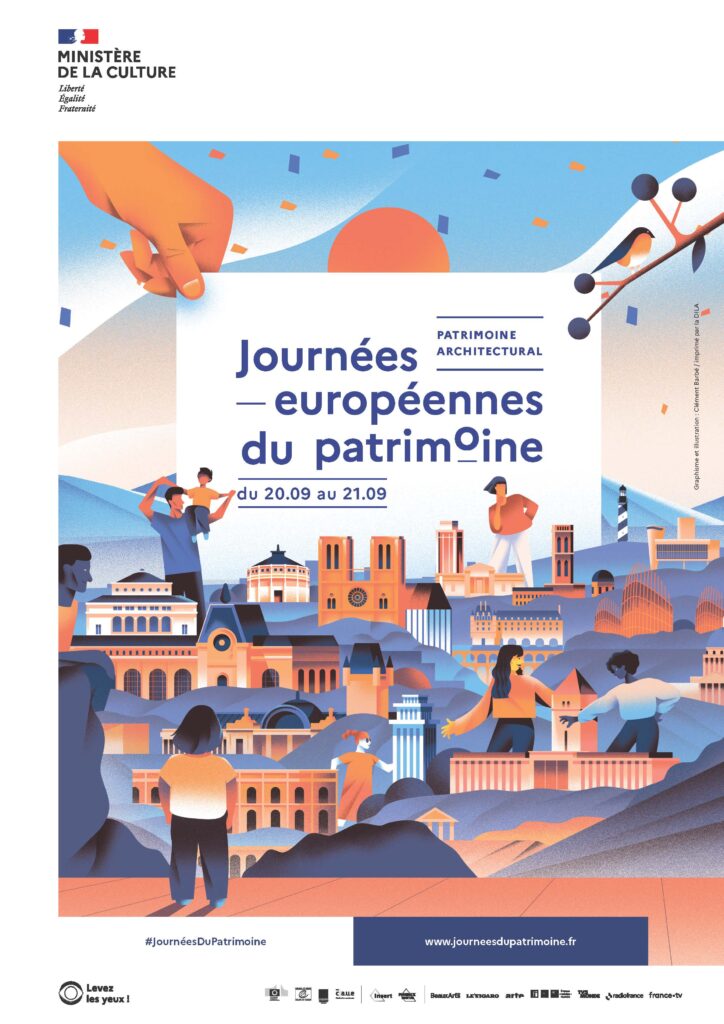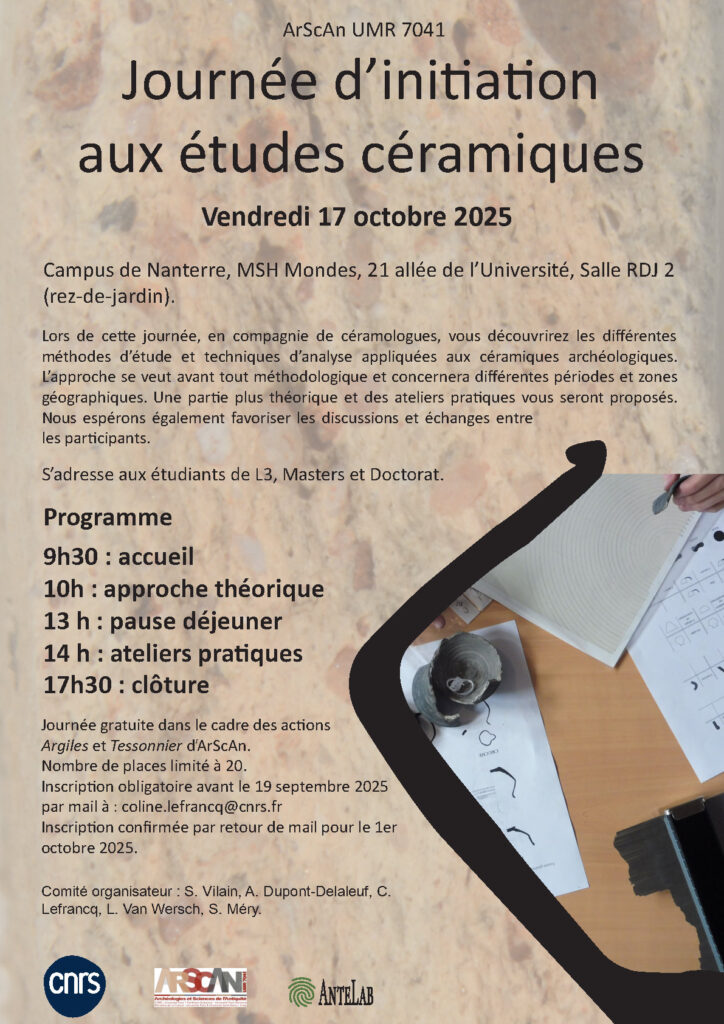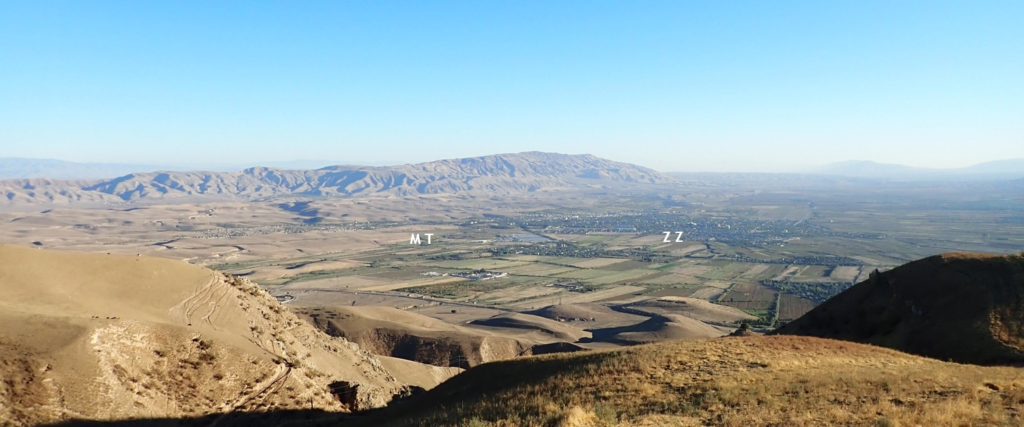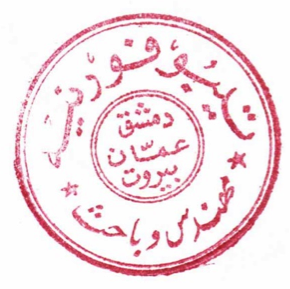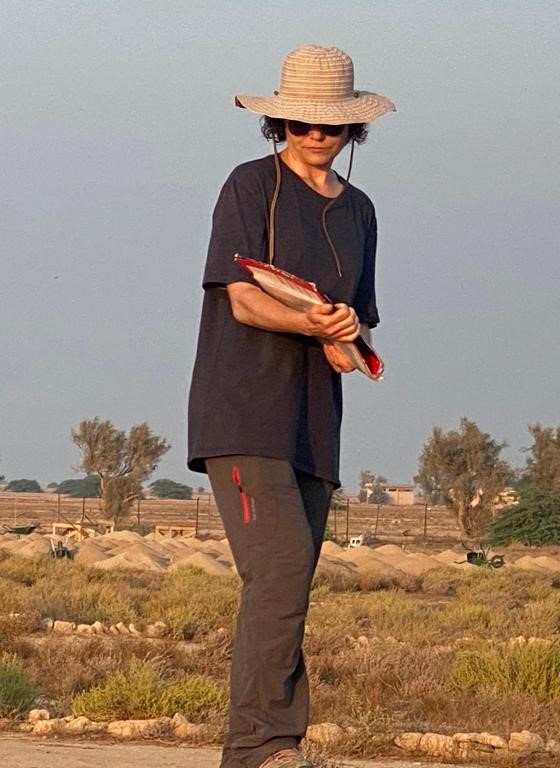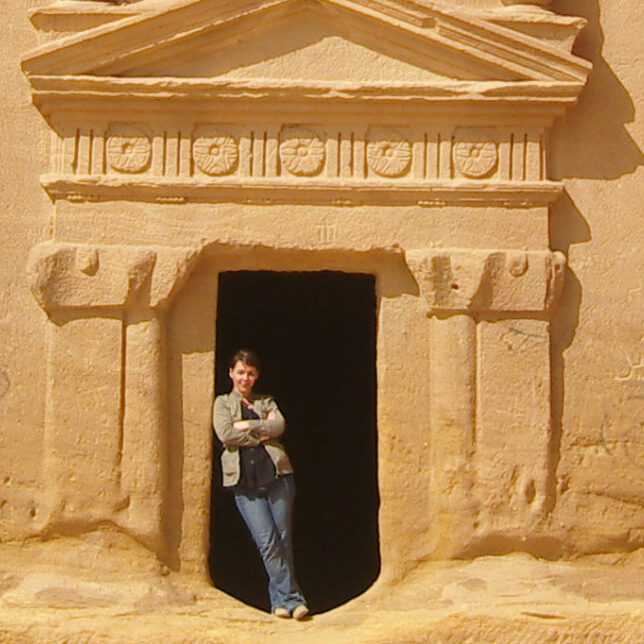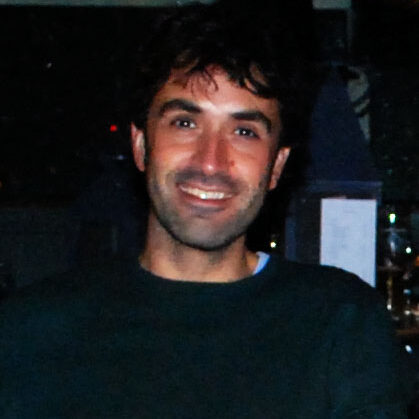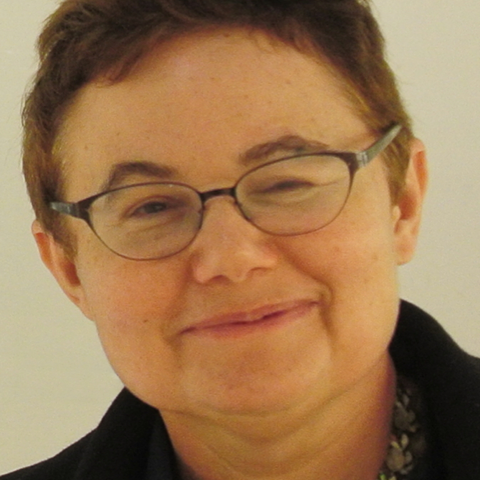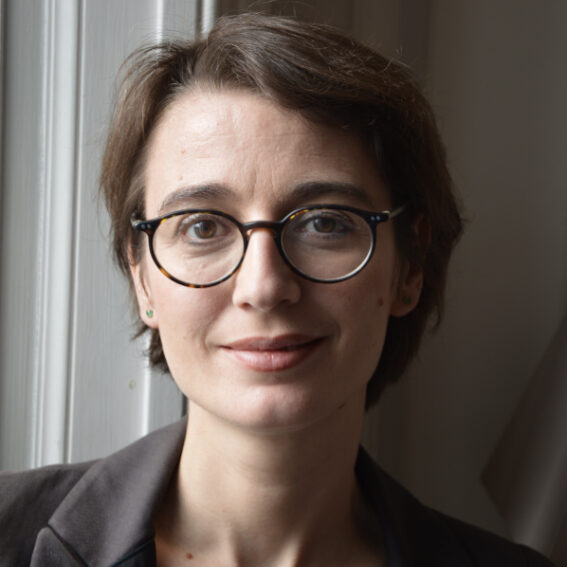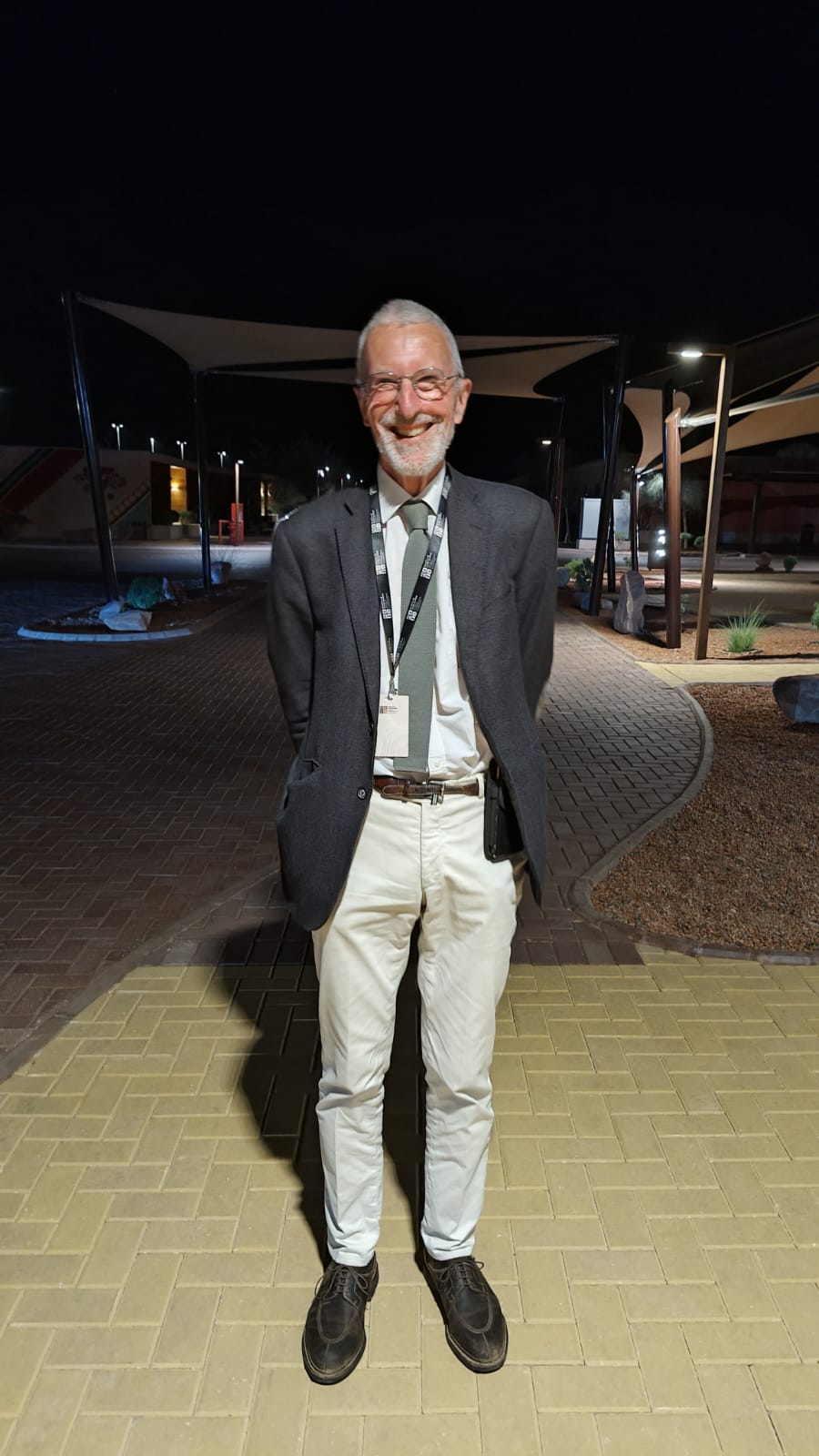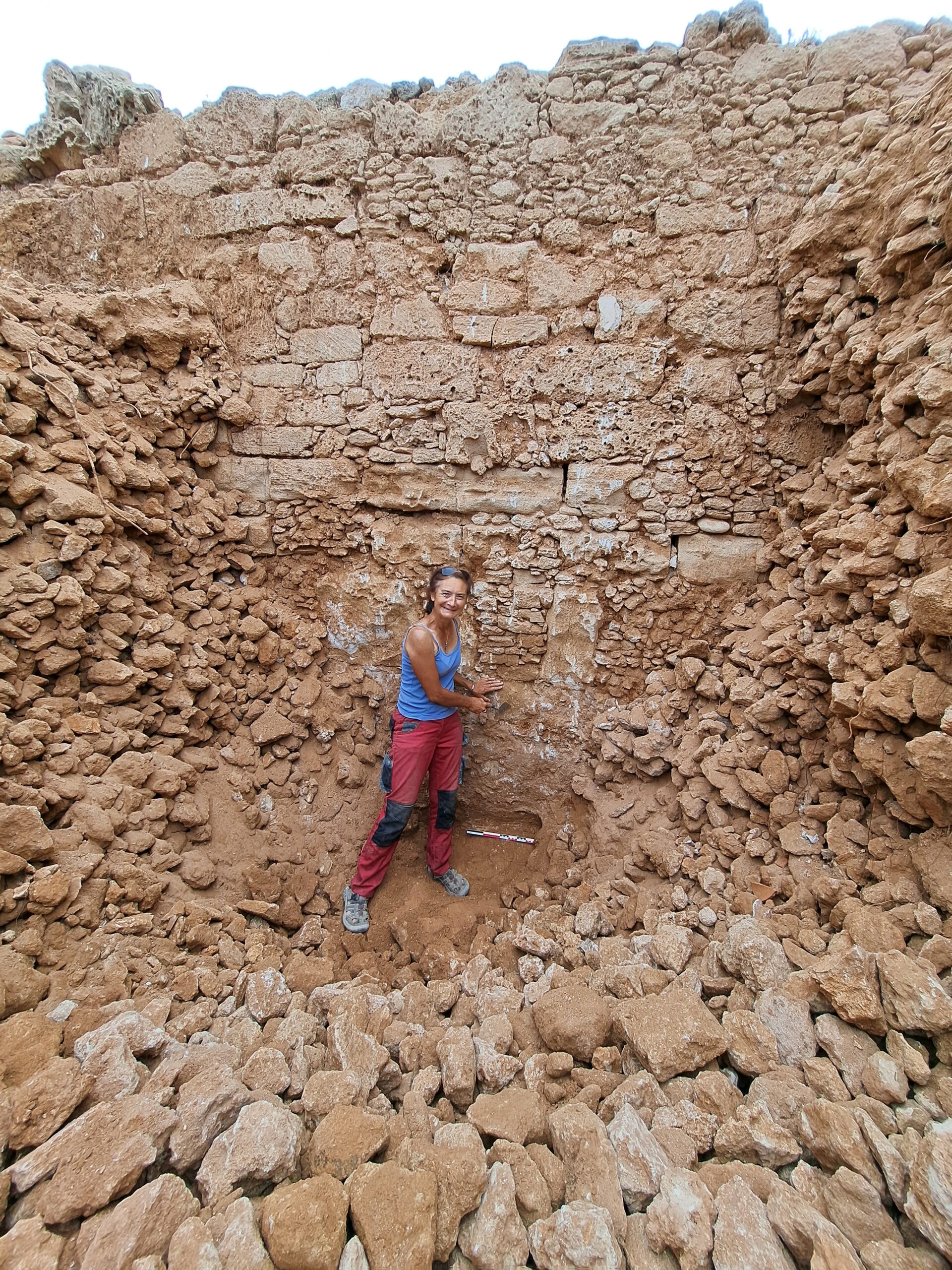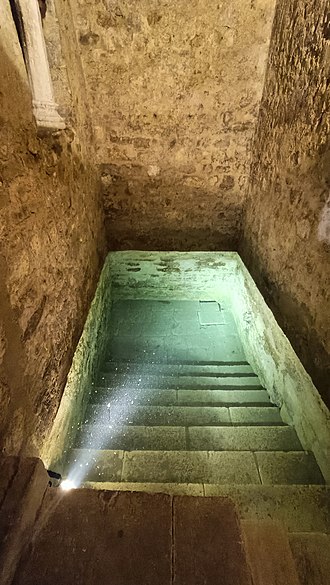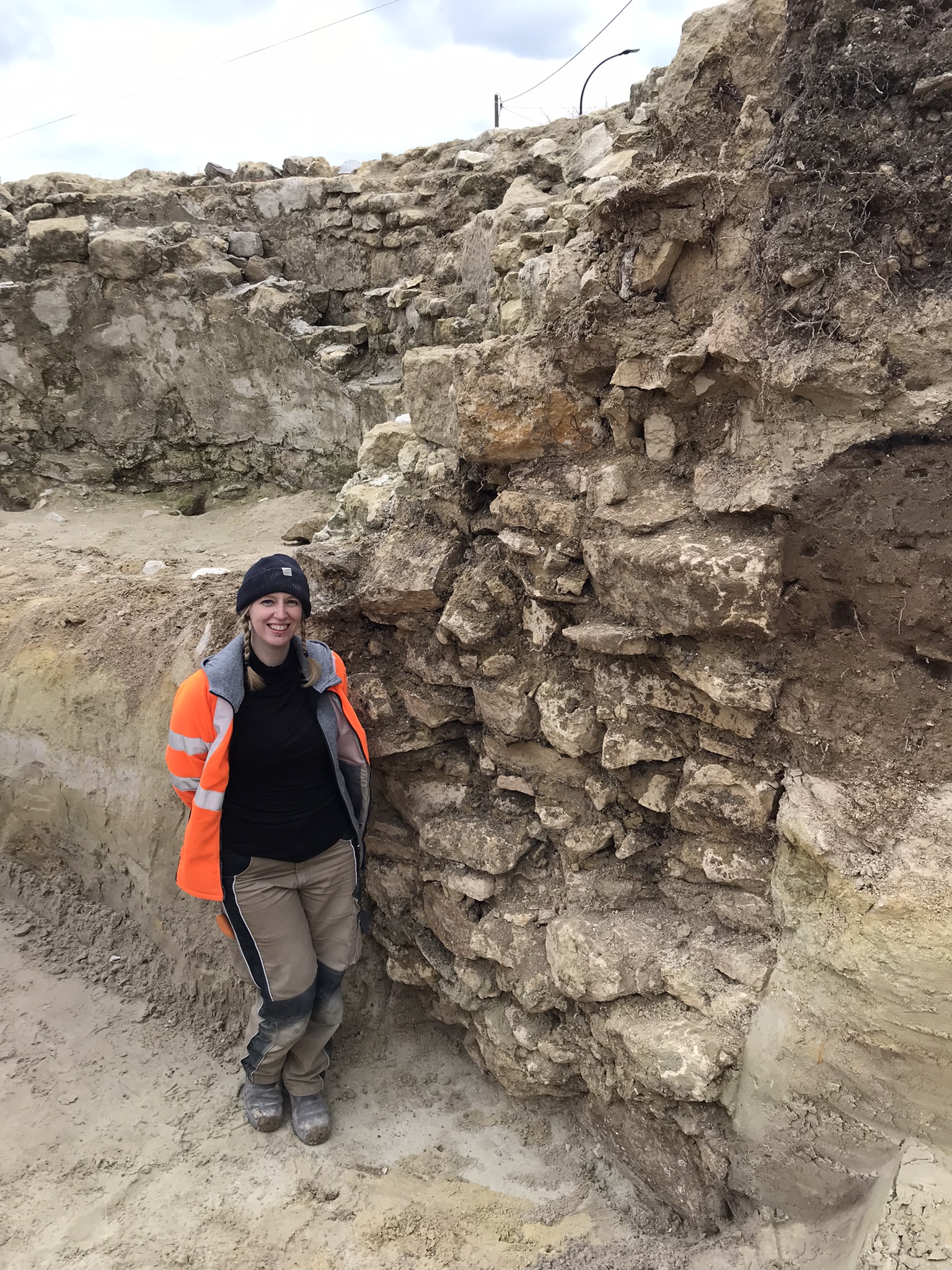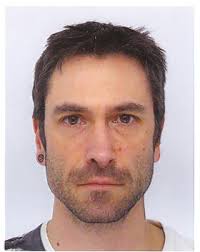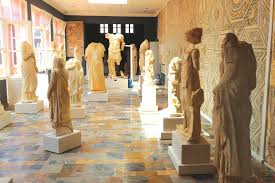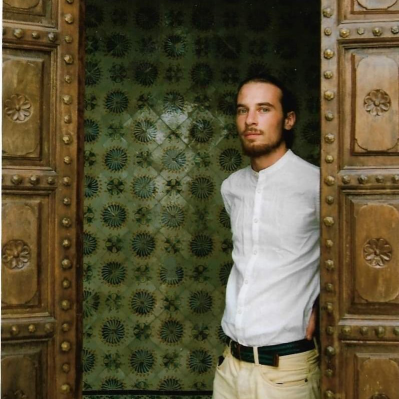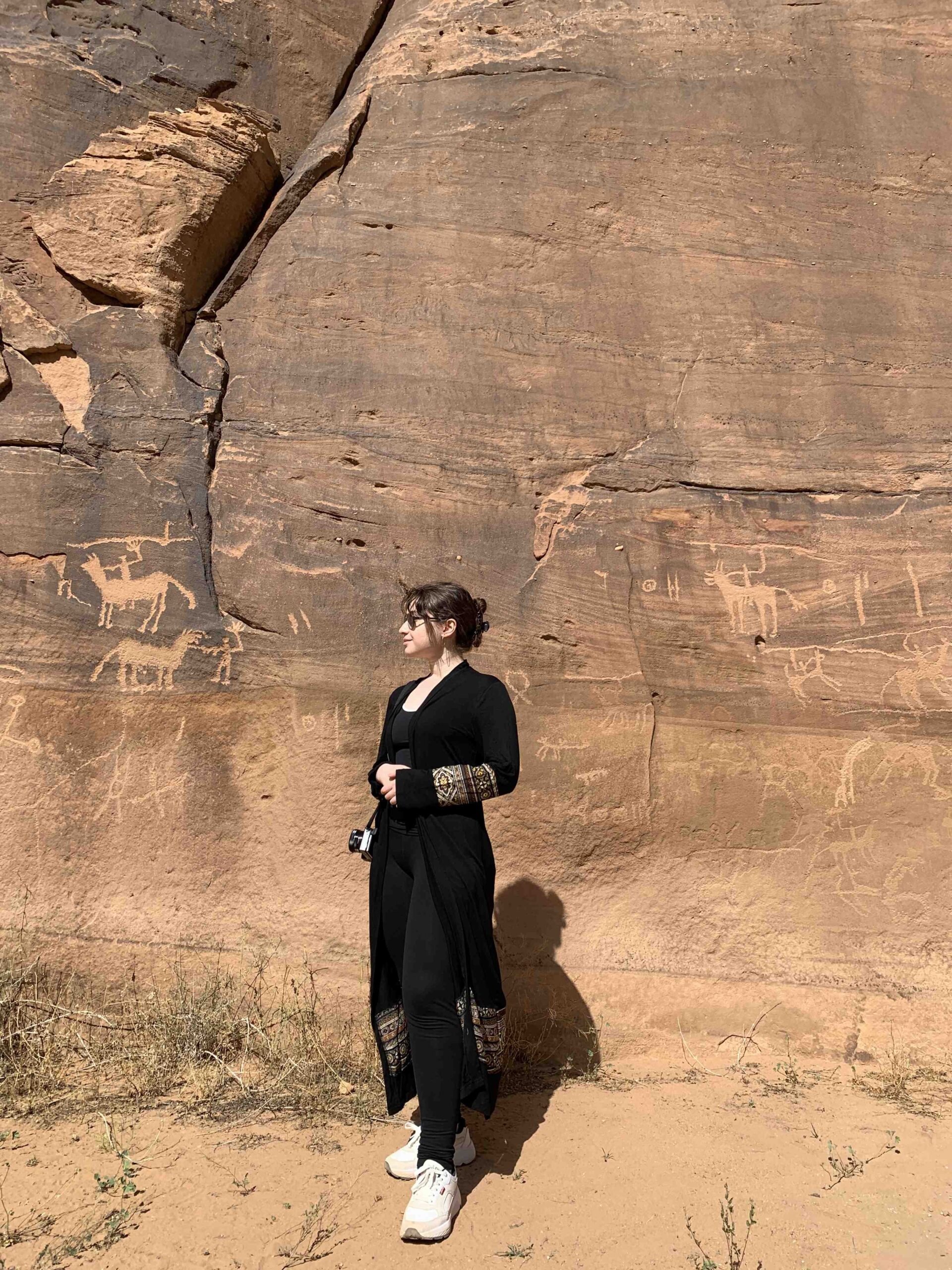
The Orient, from Alexander to Muhammad
Archaeology – History – Architecture – Epigraphy
Version française ici
Map of sites studied by OrAM
Full screen
OrAM, formerly APOHR, is one of the founding teams of ArScAn, since 1999. It follows the associated research team (ERA n°20) Archaeology of South Syria and the Petra area, created in 1978 and attached to the Centre de Recherche Archéologique (CRA) of the CNRS. With its new title, Archaeology of the Hellenistic and Roman Near East-APOHR, defined in 1999, the team immediately specified the geographical and historical framework (4th century BC-5th century AD) that characterised its founding research in Syria (South Syria, Bosra, Chahba/Philippopolis) and Jordan (Petra, Khirbet ed-Dharih). The plurality of the ancient worlds studied soon led her to open new fields of research in the Arabian Peninsula (Hegra), then in the Arabian Gulf in the Emirates (Mleiha/Oman Peninsula) and in Kuwait (Failaka), and to diversify its activity in Syria, its members carrying out research in Shâ’ra, Palmyra, Qalaat al-Mudiq/Apamea Citadel, Dura-Europos, Cyrrhus, and Saint-Symeon.
The geopolitical upheavals causing the closure of the Syrian field in 2011, the Yemeni field in 2015 (Shabwa, Makaynun), and the Ethiopian field in 2016 (Kwiha), led to the development of new archaeological missions in line with the team’s research themes, in Central Asia (Southern Tajikistan), the Arabian Peninsula (Farasan Islands, Upper Wadi Sirhan) and Jordan (Hauran, Umm as-Surab). From 2019 and 2022, the team has included the whole of the Roman Mediterranean, Egypt (Kharga Oasis) and Turkey. Chronologically, its field of competence has been extended to the early Islamic period (9th century).
Thus, the research conducted by the members of the team covers territories from the Mediterranean to Central Asia, from the conquest of the Persian Empire by Alexander to the Islamic conquest, while maintaining a special place for the Roman Empire, whose integration has opened them to the Mediterranean world in all its extension.
In order to better reflect this diversity, in 2023 APOHR changed its name to The Orient, from Alexander to Muhammad / OrAM – Archaeology – History – Architecture – Epigraphy.
The geographical and civilisational complex on which OrAM is conducting these studies was unified by Hellenism and its heritages, enriched by multiple exchanges, but also divided into numerous political and cultural entities (Greek, Nabataean, Greco-Bactrian, Parthian, Roman, Kushan, etc.). It was in this context that artistic, linguistic, religious and graphic innovations emerged and developed, which in turn were factors in the affirmation or formation of new collective identities. This circulation between unity and diversity, tradition and innovation constitutes the framework of the team’s research and justifies a broad geographical and chronological definition, making it possible to study the exchanges and syncretisms provoked by the constant contacts between these protagonists, which cannot be identified in a single place and time. Their fate during the later periods (Byzantine, Umayyad) preserves such an imprint of these past civilisations that it is necessary to consider them here too.
The team is made up of CNRS researchers and engineers, teacher-researchers, INRAP archaeologists (11 people) and PhD students (13). It welcomes many researchers assigned to other institutions or independent researchers (23).
Founded by Jean-Marie Dentzer, it remained under his direction until 1996, when he left for Damascus to become director of the Institut français d’Archéologie du Proche-Orient. It was then directed by Christian Augé (1996-2004) and then by Jacqueline Dentzer-Feydy from 2004 to 2010, with Pierre-Marie Blanc succeeding her from 2010 until 2020. Since then, the responsibility for the team is shared by Pierre-Marie Blanc, Thibaud Fournet and Mathilde Gelin.
In France, the OrAM team pursues numerous and continuous scientific collaborations with academics (Académie des Inscriptions et Belles Lettres), CNRS researchers and teacher-researchers in Paris and the Paris region (UMR 8167 LESA; univ. Paris 4; UMR CEA CNRS UVSQ 8212; UMR 7209 Museum National d’Histoire Naturelle), in Limoges (CRIHAM, univ. Limoges), in Tours (univ. François Rabelais), in Lyon (HISoMA, Maison de l’Orient et de la Méditerranée), in Bordeaux (Ausonius, univ. Bordeaux 3), Toulouse (école d’Architecture), Lattes (UMR 154) and Nice (univ. Sophia Antipolis). Her involvement in the Labex Les passés dans le présent and Dynamique des Territoires leads her to work in particular with the TGIR Huma-Num (UAR 3598), the laboratories Trajectoires (UMR 8215) and ANHIMA (UMR 8210). OrAM collaborates with the doctoral schools ED 112 of Paris 1 and ED 31 of Paris 8.
In Europe, it works with colleagues from the Deutsches Archäologisches Institut of Berlin, the universities of Basel, Geneva, Brussels, Berlin, Augsburg, Vienna, Graz, Bologna, Milan and Warsaw.
Internationally, OrAM’s numerous interventions abroad (Egypt, Jordan, Lebanon, Saudi Arabia, Kuwait, Tajikistan), necessitated by its archaeological missions, have led the team to establish partnerships with the Antiquities and Museums Directorates, the Academies of Sciences, and the History and Archaeology Institutes that conduct research there. It is involved with local universities, particularly in terms of its expertise for training courses but also for the dissemination of its research. In this way, OrAM is developing a partnership with the universities of Yarmouk and Maan (Jordan), Bir Zeit (Palestine) and King Saud (Saudi Arabia). It has set up international research agreements with the antiquities services of Jordan, Lebanon, Saudi Arabia and Yemen, with the Academy of Sciences of Tajikistan and the Institute of History, Archaeology and Ethnography of Dushanbe. It has particularly close scientific and logistical links with the Institut français du Proche-Orient and the Centre français de recherche de la Péninsule arabique, in particular through the participation of team members as directors and researchers, with the Royal Commission for Al-Ula (Saudi Arabia), and the American Centre of Oriental Research in Amman.
The subjects treated by OrAM (Themes) give it a natural kinship with the other ArScAn teams working from the Near and Middle East to Central Asia (From the Village to the East, HAROC, Archaeology of Central Asia) and on the « classical » Mediterranean world (Archaeology of the Greek World, THEMAM, LIMC, ESPRI). The study of ceramics through the TessonnierS platform, of which OrAM is the determining actor, involves the participation of GAMA, VEPMO, Archaeology of Central Asia, Aegean World. Finally, OrAM is integrated into the research axes of ArScAn (axes 1, 2, 3, 4) and participates in the publication of work resulting from the Collective Projects.
OrAM’s ARCHAEOLOGICAL PROGRAMS
The team conducts research at three UNESCO World Heritage sites: Petra in Jordan, Bosra and St. Symeon in Syria.
ARCHAEOLOGICAL MISSIONS LED BY TEAM MEMBERS
• French mission in Upper Jordan (Hauran and Umm as-Surab) (P.-M. Blanc, P. Gilento).
• French mission in Petra, Jordan (L. Tholbecq, F. Renel).
• Franco-Jordanian mission to Khirbet Ed-Dharih, Jordan (F. Villeneuve, Z. Al-Muheisen).
• Franco-Saudi mission in Hegra/Madain Saleh, Saudi Arabia (F. Villeneuve co-director until 2019, L. Nehmé, D. Al-Thalhi).
• Saudi-French Mission to the Farasan Islands, Saudi Arabia (S. Marion de Procé, M. Al-Malki).
• Franco-Saudi prospection mission in Upper Wadi Sirhan, Saudi Arabia (P. Piraud-Fournet).
• Franco-Kuwaiti mission of Faïlaka: the Hellenistic settlement, Kuwait (M. Gelin, scientific director).
• Mission of Kolaqan, island of Qeshm, Persian Gulf, Iran (P. Ghasemi).
• French-Tajik Mission of Southern Tajikistan, Tajikistan (M. Gelin, Y. Yakubov, T. Filimonova, A. Karaev).
• French Mission to the Kharga Oasis, Egypt (G. Tallet).
• Lebanese-French mission of Nahr Ibrahim, Lebanon (R. Harfouche).
• Epigraphic mission in Anatolia, Turkey (M. Goréa).
MISSIONS IN BREAK (publications in progress)
• French-Syrian mission in Bosra, Syria (P.-M. Blanc).
• French mission in Southern Syria (P.-M. Blanc).
• Lebanese-Syrian mission of Cyrrhus/Nebi Houri, Syria (J. Abdul Massih, Sh. Al-Shbib).
• French-Syrian Mission of Qalaat Al-Mudiq/Apamea Citadel, Syria (M. Gelin, Sh. Al-Shbib).
• French Mission of Kwiha, Tigray region, Ethiopia (J.-F. Breton).
• French-Tajik mission of Takht-i Sangin, Tajikistan (M. Gelin, T. Khudjagueldiev).
Persons in charge
Permanent members
Members of CNRS delegation
PhD Students
Partner members
-

ABDALLAH Komait
-
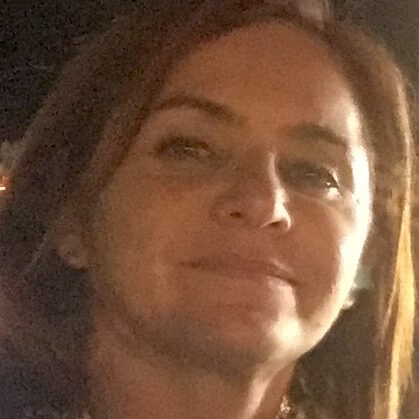
ABDUL MASSIH Jeanine
-
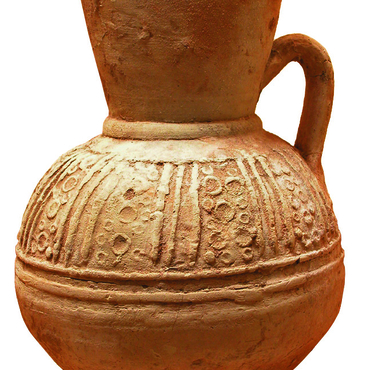
AL SALTY ALKRAD Onas
-

AL-HALABI Taisir
-

ARNOULD-BÉHAR Caroline
-
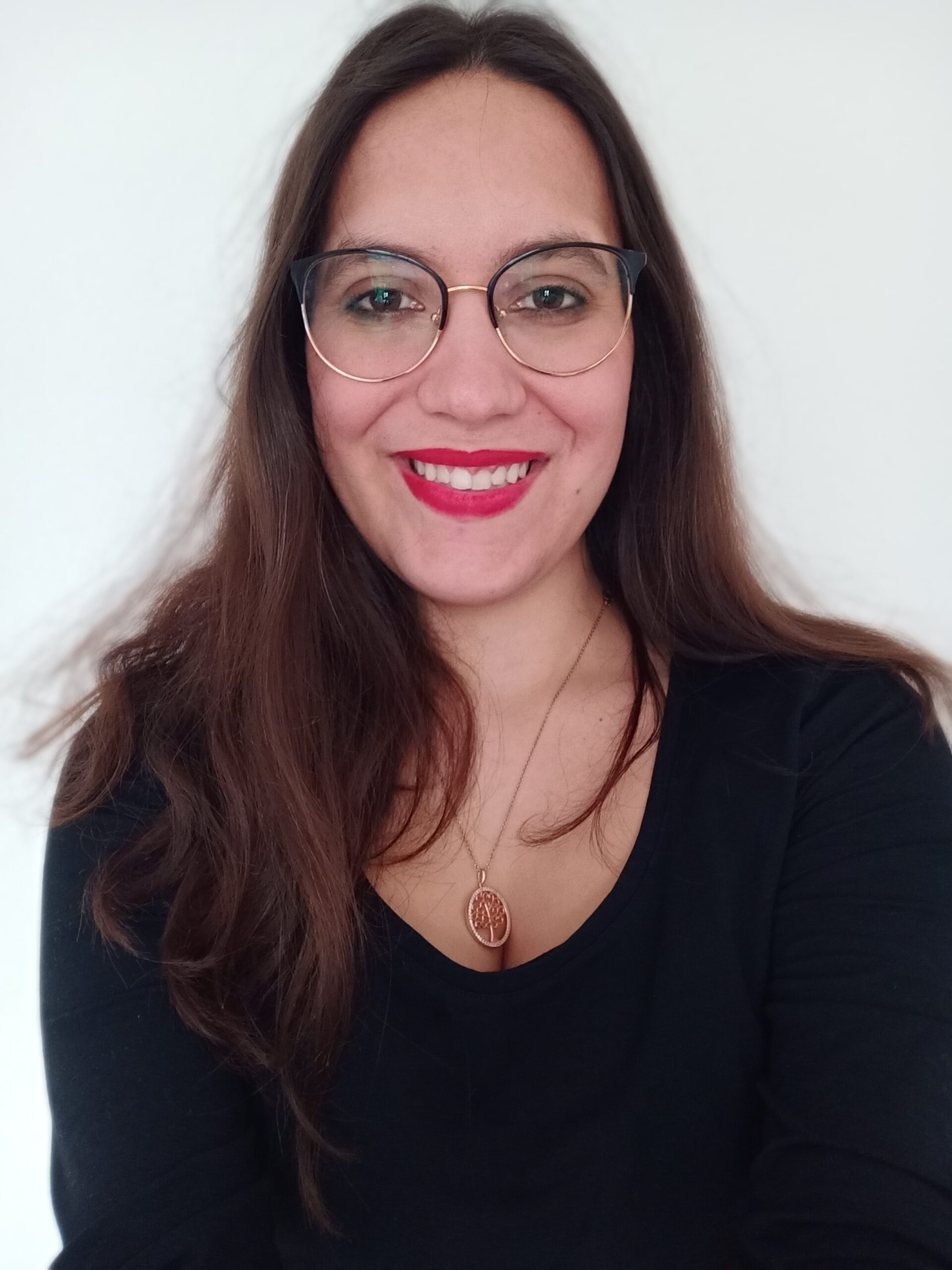
BERETTA Valentina Alessia
-

BESSAC Jean-Claude
-
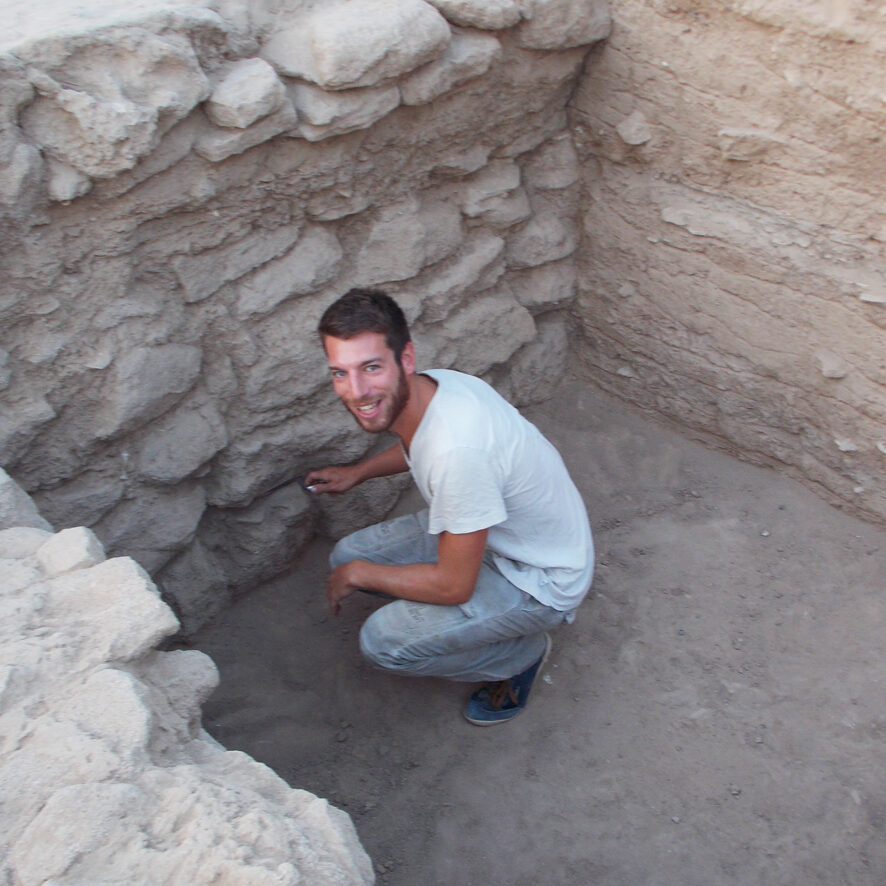
BOUCARD Jordan
-

BRETON Jean-François
-
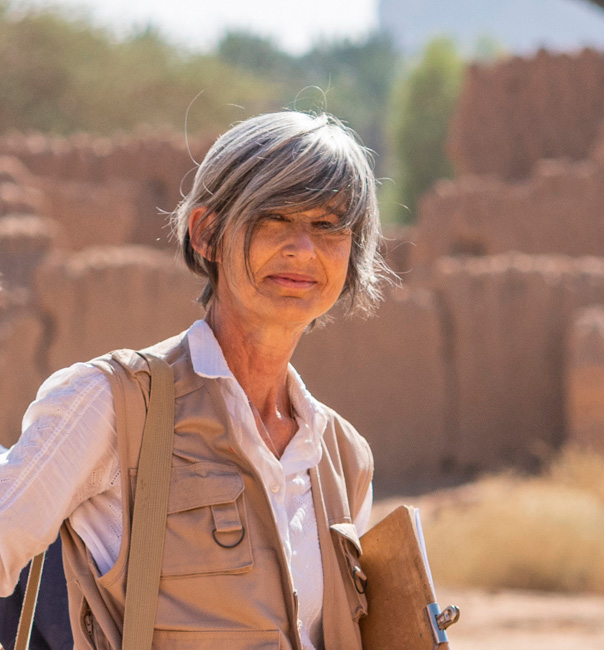
CLAUSS-BALTY Pascale
-
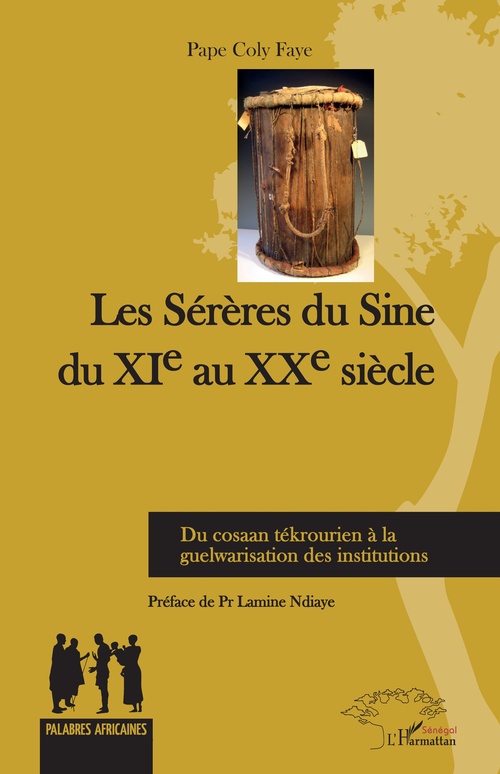
COLY FAYE Papa
-

COMTE Marie-Christine
-
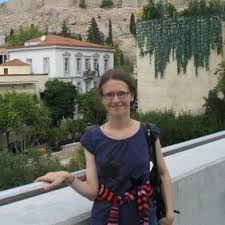
COQUEUGNIOT Gaëlle
-
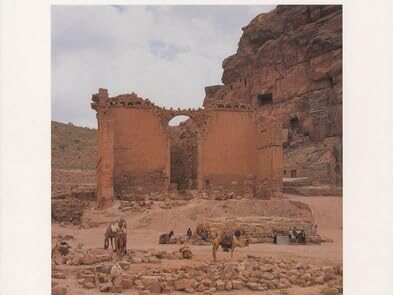
DENTZER-FEYDY Jacqueline
-
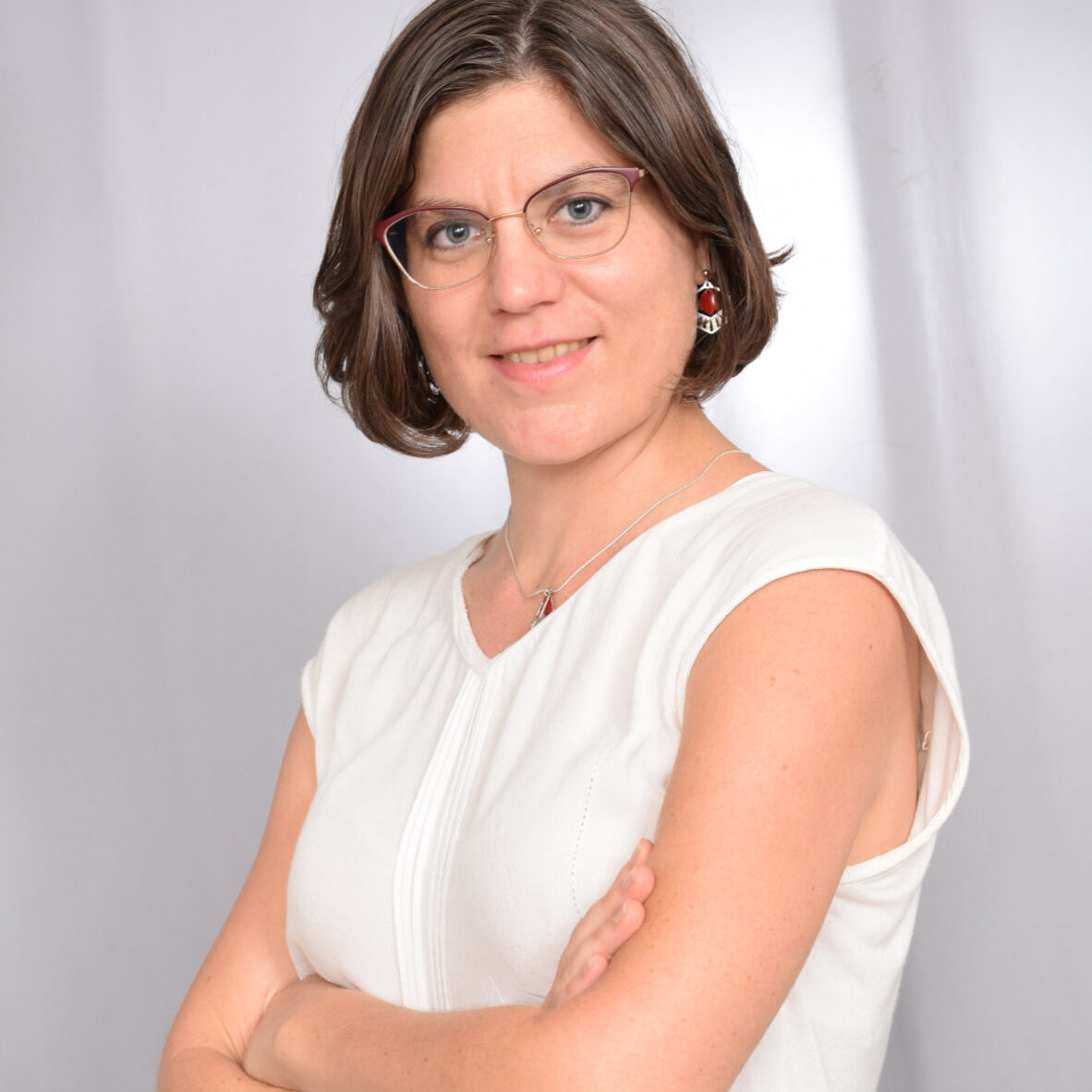
DUCRET Pauline
-

DURAND Caroline
-

HARFOUCHE Romana
-
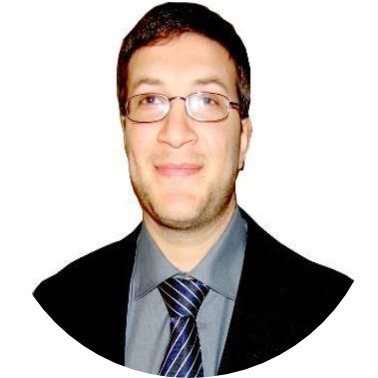
HATOUM Chadi
-
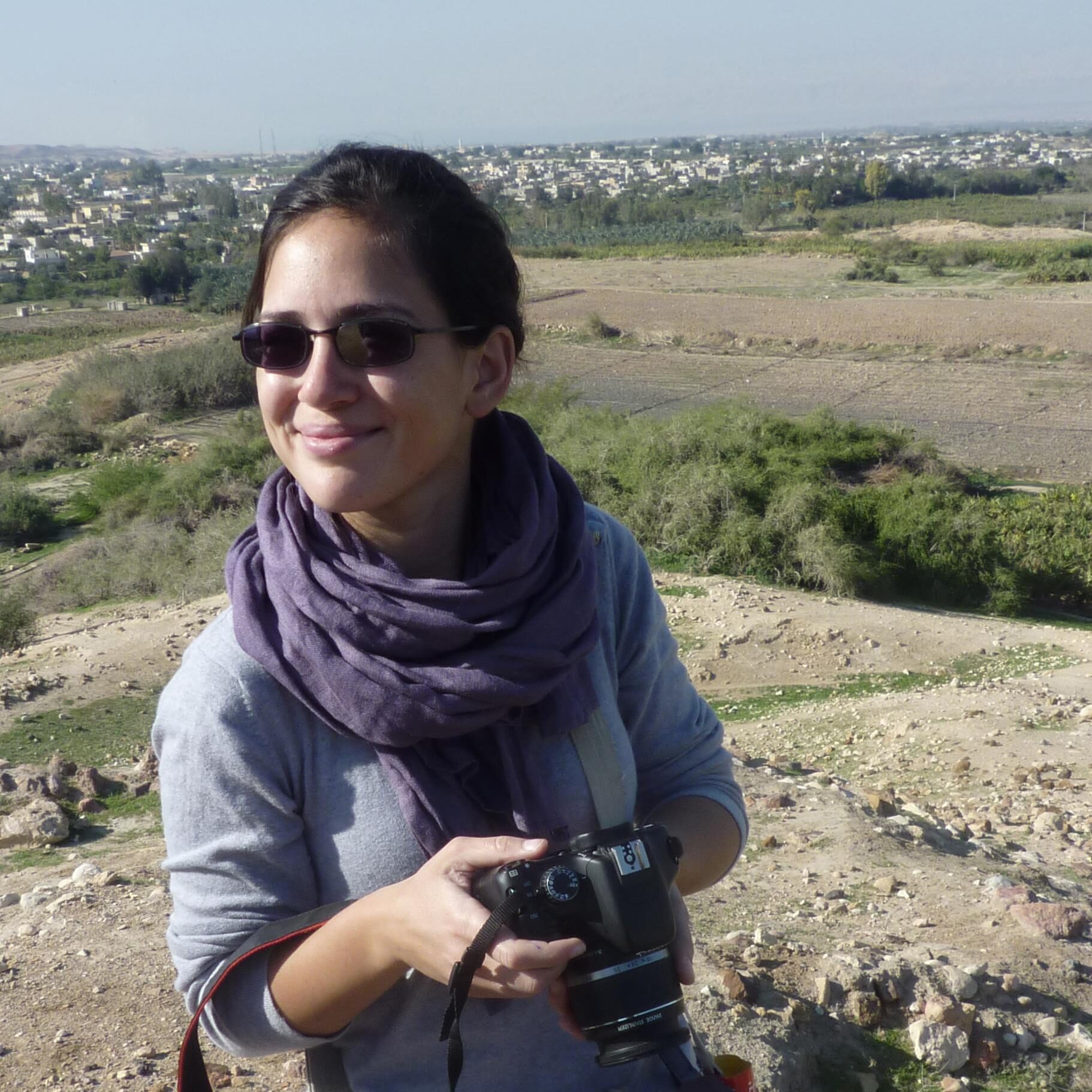
KHAN Bénédicte
-

LABEDAN-KODAS Charlotte
-

MAILLARD Dimitri
-

MALINGUE Guillaume
-
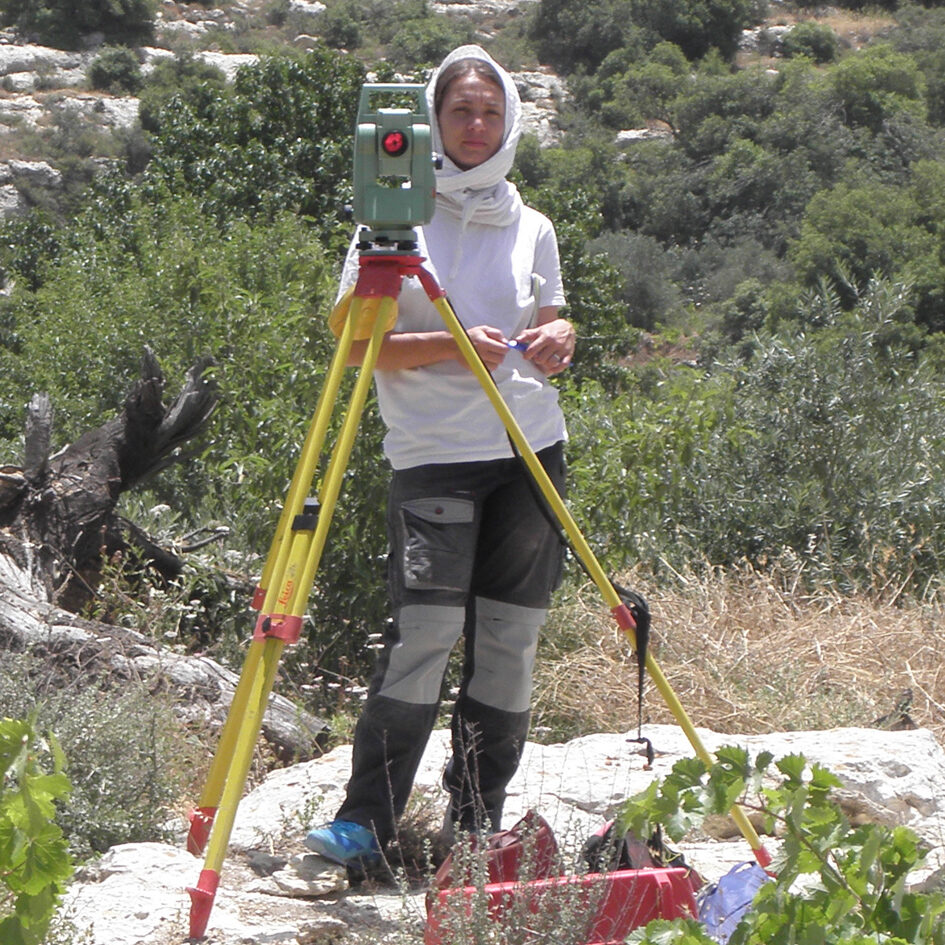
MARION DE PROCÉ Solène
-
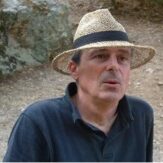
MOUTON Michel
-
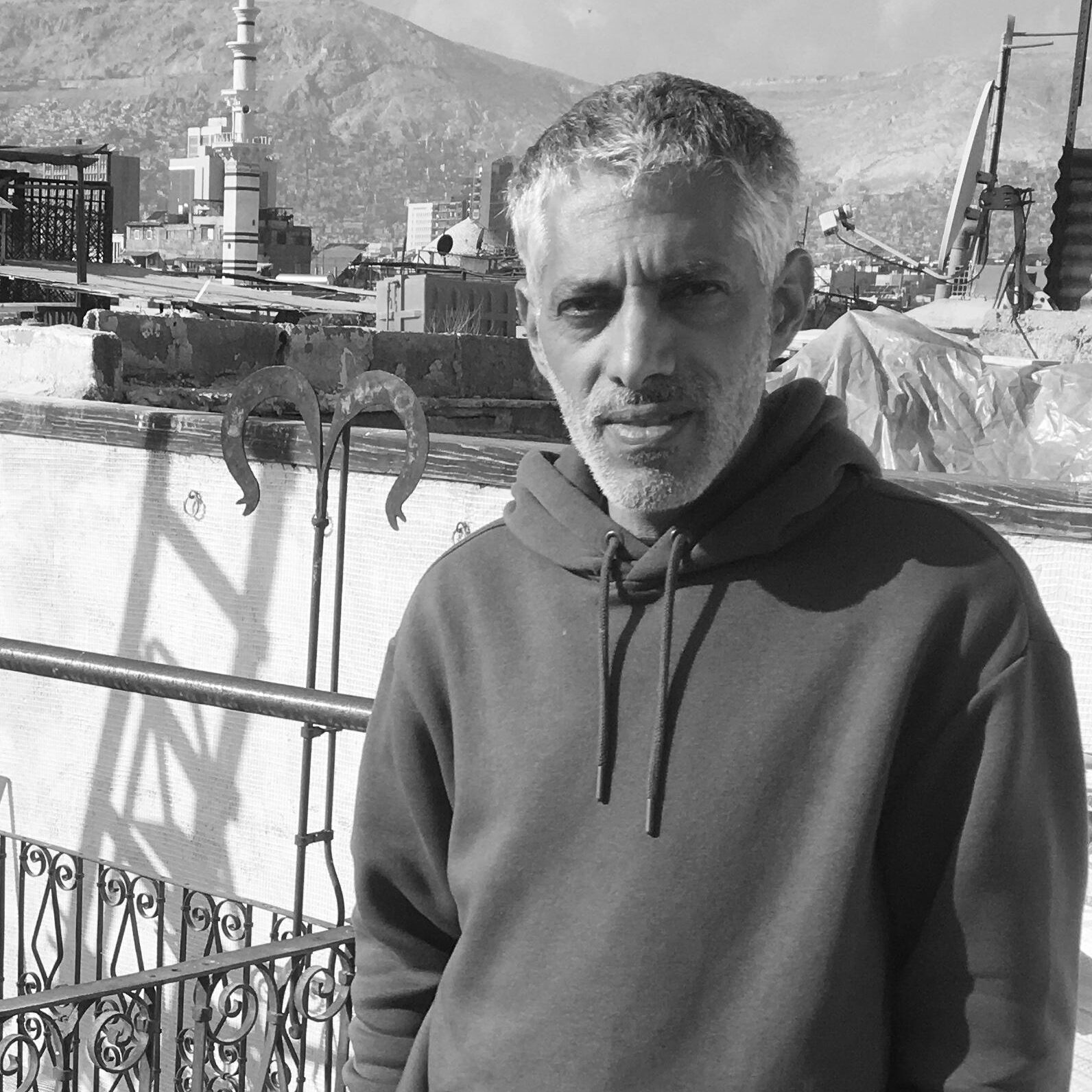
MUNIF Hani
-
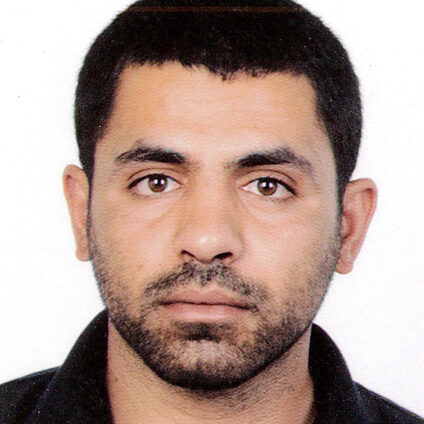
NAGAGREH Ghassan
-
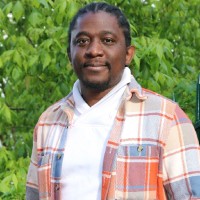
NSAH EKOMI Jean Terry
-

PAPPALARDO Raffaella
-

PIRAUD-FOURNET Pauline
-
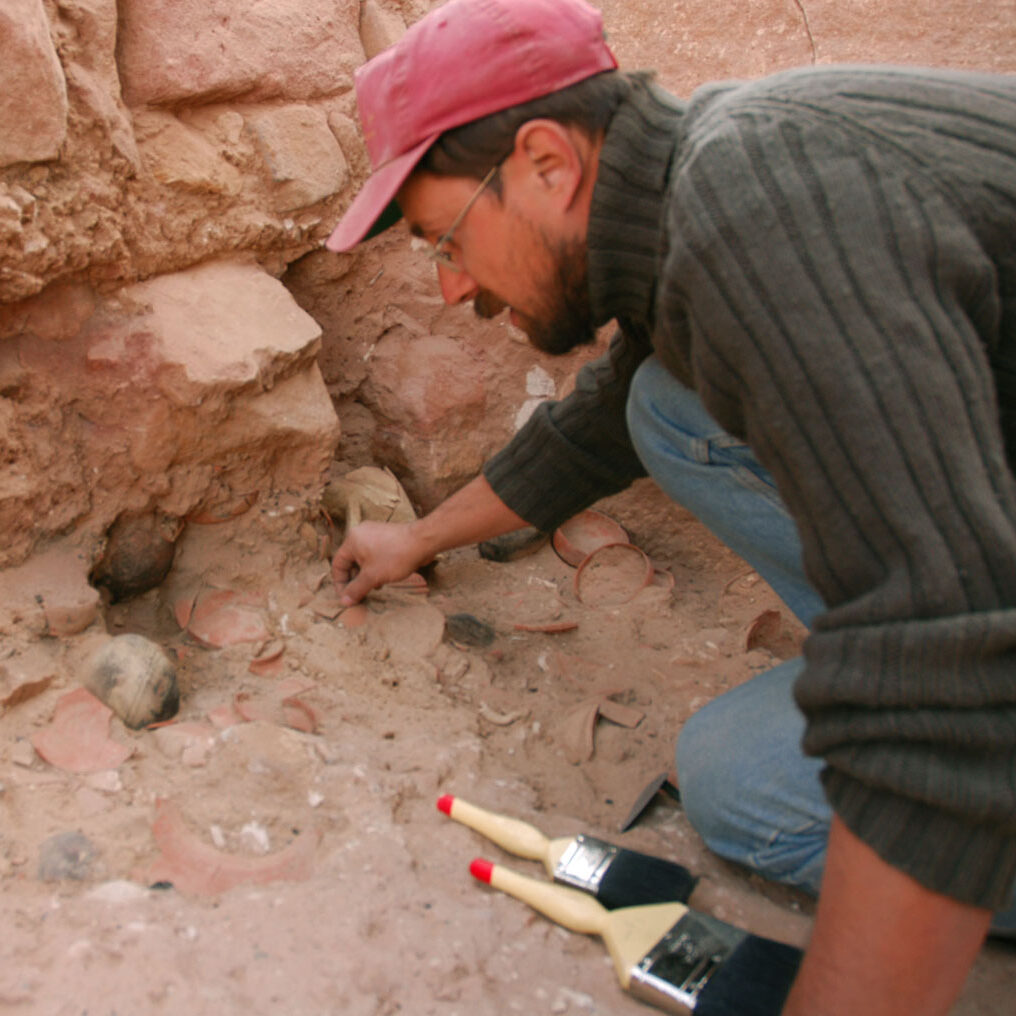
RENEL François
-

REZKALLAH Younes
-
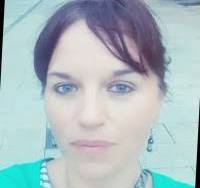
SEIGNEURET Delphine
-
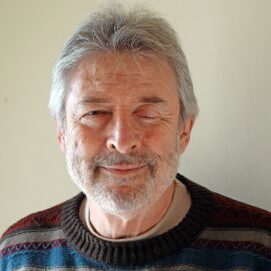
THÉBAULT Gérard
-

THOLBECQ Laurent
-
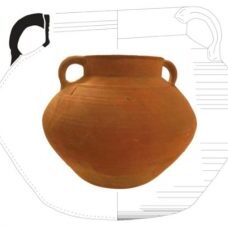
VIÉ Laura
-

VILLENEUVE DE MONTLIVAULT Estelle
Articles dans une revue
- Piero Gilento, Giovanni Pesce, Apolline Vernet, Bénédicte Khan, Cecilia Pesce. Unveiling AlUla Old Town: A Transdisciplinary Approach to the Study of the Built Heritage in the Northwest of Saudi Arabia. Integration of Building Archaeology and Mortar Analysis. International Journal of Architectural Heritage, 2025, pp.1-17. ⟨10.1080/15583058.2025.2597492⟩. ⟨halshs-05418883⟩
- Caroline Arnould-Béhar. Compte-rendu de : Yaron Z. Eliav, A Jew in the Bathouse, Cultural Interaction in the Ancient Mediterranean, Oxford/Princeton, Princeton University Press, 2023.. Revue des etudes juives, 2025, 184/1-2, p. 281-284. ⟨hal-05349830⟩
- Mathilde Gelin, Tatiana Guermanovna Filimonova, Valère Bombeau, Gourguen Davtian, Islom Ashurmadov, et al.. Франко-Таджикская Археологическая Миссия в Южном Таджикистане (Исследования 2024 г.). Археологические работы в Таджикистане, 2025, 46, pp.187-217. ⟨hal-05216615⟩
- Parsa Ghasemi. Persian Paradises: Unveiling the Sasanian Dastgerd of Mohammadabad-Baghdasht, South of Jereh, Pars, Iran. Journal of Field Archaeology, 2024, pp.1-22. ⟨10.1080/00934690.2024.2438545⟩. ⟨hal-04861724⟩
- Jean-François Breton. Francis Anfray (1926-2022) In Memoriam. Annales d'Éthiopie, 2024, 35-2024 (35), pp.9-10. ⟨hal-05175002⟩
- Bérangère Redon, Joachim Le Bomin, Marie-Françoise Boussac, Julien Cavero, Maël Crépy, et al.. Taposiris Magna et Plinthine (2023). Bulletin archéologique des Écoles françaises à l’étranger, 2024, ⟨10.4000/11swz⟩. ⟨hal-04679308⟩
- Pauline Lafille, Anne Massoni, Gaëlle Tallet. Rencontre avec François Boespflug. Tierce. Carnets de recherches interdisciplinaires en histoire, histoire de l'art et musicologie, 2024, Du musée au terrain : le numérique au service des arts. Entretiens, 2023 (7). ⟨hal-04628794⟩
- Jean-François Breton, Anne Regourd. Chroniques de Shabwa (1975-2002). Nouvelles Chroniques du manuscrit au Yémen, 2024, 18, pp.67-94. ⟨hal-04969577⟩
- Marie Laguardia. New Data on the Necropolis of Thaj: evolution of the funerary architecture. Proceedings of the Seminar for Arabian Studies, 2024, 53. ⟨hal-04687683⟩
- Mathilde Gelin. Compte rendu de D. Bonanno, C. Bonnet, O. Coloru, A. Fenet, T. Kaizer, Franz Cumont. Studia Pontica II ; Études syriennes ; Fouilles de Doura-Europos (1922-1923). Introductions historiographiques, Rome, Academia Belgica, 2022 (Bibliotheca Cumontiana. Scripta Maiora VI), ISBN 978-9-062-81051-2.. L'Antiquité classique : revue interuniversitaire d’études classiques, 2024, 93, pp.385-387. ⟨hal-04845346⟩
- Marie Laguardia. La mort en Arabie du Nord-Est : Synthèse des pratiques funéraires entre 1000 av.-700 apr. n. è.. Arabian Humanities, 2024, 19, ⟨10.4000/1243m⟩. ⟨hal-04687715⟩
- Mathilde Gelin. L’établissement hellénistique d'Ikaros-Faïlaka au Koweït. Arabian Humanities, 2024, Bahreïn et ses voisins, 19, https://journals.openedition.org/arabianhumanities/14357. ⟨10.4000/1243q⟩. ⟨hal-04223841⟩
- Mathilde Gelin, Yusufsho Yakubov, Tatiana Guermanovna Filimonova, Albane Saintenoy, Rémi Lambert, et al.. Таджикско-Французская археологическая миссия на юге Таджикистана. Отчет о исследованиях в 2022 году. Археологические работы в Таджикистане, 2024, 45, pp.285-307. ⟨hal-04845541⟩
- Pauline Ducret. « Tu quoque mi fili » (I) : Brutus, du philosophe à la brute. Histoire culturelle de l'Europe, 2024, 6, https://mrsh.unicaen.fr/hce/index.php_id_2495.html#ftn1. ⟨hal-04920200⟩
- Valentina Alessia Beretta. The Anasyrma Fertility Ritual in Ancient Egypt: from Hathor to Hermaphroditus. Birmingham Egyptology Journal , 2024, 10, pp.22-35. ⟨hal-04447049⟩
- Olivia Munoz, Kaïna Rointru, Mathilde Jean, Maria Paola Pellegrino, Caroline Renaux, et al.. New insights on Bronze Age funerary monuments in the Ḥajar foothills: surveys and excavations at Bisya (Ad-Dākhilīyyah, Sultanate of Oman). Proceedings of the Seminar for Arabian Studies, 2024, Papers from the fifty-sixth meeting of the Seminar for Arabian Studies held in Aarhus 4–6 August 2023, 53, pp.173-193. ⟨10.32028/psas.v53i⟩. ⟨hal-04616330⟩
- Pascale Clauss-Balty. Recension : Elsa Rocca, Pauline Piraud-Fournet et François Baratte (éd.), Les « salles à auges », des édifices controversés de l’Antiquité tardive entre Afrique et Proche-Orient. Syria. Archéologie, art et histoire, 2024, ⟨10.4000/128y4⟩. ⟨halshs-04778251⟩
- Jean-François Breton. Albâtres, calcaires, granits en Arabie du Sud-Ouest. Syria. Archéologie, art et histoire, 2023, 100, pp.1-24. ⟨hal-04969443⟩
- Pascale Clauss-Balty, Yasmin Kanhoush, Sarra Ben Bader, Julien Charbonnier. Preliminary analyses of vernacular earthen architecture in the gardens of al-ʿUlā oasis (Saudi Arabia). Proceedings of the Seminar for Arabian Studies, 2023, Papers from the fifty-fifth meeting of the Seminar for Arabian Studies held at Humboldt Universität, Berlin, 5–7 August 2022 (52), pp.87-105. ⟨hal-05004891⟩
- Thibaud Fournet, Gérard Charpentier. Les thermes romano-byzantins de Deir el-Qalaa. BAAL - Bulletin d'Archéologie et d'Architecture Libanaises, A paraître, Hors-Série XX. ⟨hal-03936034⟩
- Maria Gorea, James D. Moore. AIBL-CIS de Ricci no. 2: A New Jewish and Aramaic Religious Text from Egypt Dating between the Early 2nd and Early 4th Centuries CE. Dead Sea Discoveries, In press. ⟨hal-03970641⟩
- Parsa Ghasemi. بررسی مجموعه گلمهرهای ساسانی بازگردانده شده از آمریکا در موزه ملی ایران. Journal of Iran National Museum, 2023, 3 (3), pp.75-112. ⟨10.22034/jinm.2023.704228⟩. ⟨hal-04073625⟩
- François Renel. Des nichoirs à oiseaux en terre cuite. Archéopages : archéologie & société, 2023, 49, pp.118-119. ⟨10.4000/archeopages.16626⟩. ⟨hal-04464989⟩
- François Renel, Aurélia Alligri. La préparation des fibres de laine. Des réchauds de cardeur du XVIe siècle à Marly-la-Ville (Val-d’Oise). Archéopages : archéologie & société, 2023, 49, pp.58-59. ⟨10.4000/archeopages.16013⟩. ⟨hal-04464921⟩
- Maria Gorea, James D. Moore, Verena Lepper. Papyri égyptiens et sémitiques de la collection du Cabinet du Corpus inscriptionum semiticarum. Comptes-rendus des séances de l'Académie des inscriptions et belles-lettres, A paraître. ⟨hal-03970647⟩
- Thibaud Fournet. Le grand temple de Deir el-Qalaa. BAAL - Bulletin d'Archéologie et d'Architecture Libanaises, A paraître, Hors-Série XX. ⟨hal-03940494⟩
- Kamel Doraï, Pauline Piraud-Fournet. La vie mode d’emploi dans le camp de réfugiés de Zaatari (Jordanie). Analyse sociographique de l’habitat « de fortune » des réfugiés syriens. Gradhiva : revue d'histoire et d'archives de l'anthropologie , 2023, Les vies longues de la maison, 35 (35), pp.112-135. ⟨10.4000/gradhiva.6994⟩. ⟨hal-04011666⟩
- Mathilde Gelin, Yusufsho Yakubov, Tatiana Guermanovna Filimonova, Gourguen Davtian, Olivier Bordeaux, et al.. Исследования Таджикско-Французской Археологической миссии Южного Таджикистана в 2021 году. Археологические работы в Таджикистане, 2023, 44, pp.196-222. ⟨hal-04223826⟩
- Parsa Ghasemi. Two Sasanian rock reliefs of the king combatting a lion. Historia i Świat, 2022, 11, pp.49-70. ⟨10.34739/his.2022.11.03⟩. ⟨hal-04854412⟩
- Mathilde Gelin. Compte rendu de: A. Sartre-Fauriat, Aventuriers, voyageurs et savants. À la découverte archéologique de la Syrie XVIIe-XXIe siècle. Paris, 2021.. L'Antiquité classique : revue interuniversitaire d’études classiques, 2022, 91, pp.414-416. ⟨hal-03517409⟩
- Damien Agut-Labordere, Arnault Gigante, Thierry Gonon, Gaëlle Tallet. Villages et communautés rurales dans l’oasis de Kharga (Égypte) à l’époque perse et hellénistique: les fouilles d’Ayn Manâwir et d’el-Deir. Bulletin de la Société française d'archéologie classique, 2022, 73, pp.162-170. ⟨hal-03983666⟩
- Mathilde Gelin, Pierre-Marie Blanc. Тахти-Сангин 2017. Предварительный отчет [Takht-i Sangin 2017. Rapport préliminaire]. Археологические работы в Таджикистане, 2022, 42, pp.153-162. ⟨hal-03258110⟩
- Gérard Thébault. Apamée, une ville hellénistique fortifiée sur l’Euphrate : urbanisme et « trigonographie ». Syria. Archéologie, art et histoire, 2022, 99, pp.101-146. ⟨10.4000/syria.13985⟩. ⟨hal-04743306⟩
- Gaëlle Tallet. Entre agriculture et pastoralisme : une société oasienne à El-Deir (oasis de Kharga) face aux pulsations climatiques au Ier s. avant notre ère. Bulletin de la Société française d'égyptologie, 2022, 205, pp.104-138. ⟨hal-03983643⟩
- Yannick Fouvez, Priscillia Debouige, François Renel, Emeline Le Goff. Le château de Launoy-Renault à Verdelot (Seine-et-Marne) : apport d’un diagnostic archéologique à la connaissance des petites élites rurales modernes de l’Est francilien. Revue archéologique d'Île-de-France, 2022, 13, pp.357-388. ⟨hal-04111899⟩
- Gérard Thébault. Les forts romains de Palmyrène : étude de sept plans inédits. Syria. Archéologie, art et histoire, 2021, 98, pp.381-418. ⟨10.4000/syria.13565⟩. ⟨halshs-03961143⟩
- Saskia E. Ryan, Vladimir Dabrowski, Arnaud Dapoigny, Caroline Gauthier, Éric Douville, et al.. Strontium isotope evidence for a trade network between southeastern Arabia and India during Antiquity. Scientific Reports, 2021, 11 (1), ⟨10.1038/s41598-020-79675-3⟩. ⟨hal-03116675⟩
- Vladimir Dabrowski, Charlène Bouchaud, Margareta Tengberg, Michel Mouton. Crop processing, consumption and trade of Asian rice (Oryza sativa L.) in the Arabian Peninsula during Antiquity: earliest evidence from Mleiha (third c. AD), United Arab Emirates. Archaeological and Anthropological Sciences, 2021, 13 (34), ⟨10.1007/s12520-021-01277-5⟩. ⟨hal-03391779⟩
- François Renel. Roman pottery from the Building C4 pantry in the Qasr al-Bint area of Petra. Polish Archaeology in the Mediterranean, 2021, 30 (2), pp.629 - 654. ⟨10.31338/uw.2083-537x.pam30.2.05⟩. ⟨hal-03874111⟩
- Michel Mouton. Explosion du port de Beyrouth : une UMIFRE au cœur de la réponse internationale. La Lettre de l'InSHS, 2021, pp.36-38. ⟨hal-03814161⟩
- Khaled Al-Bashaireh, Maen Omoush, Mahmoud Al-Kofahi, Pierre-Marie Blanc, Piero Gilento. Technological and provenance aspects of Umayyad and Ayyubid-Mamluk pottery from Umm as-Surab, north-eastern Jordan : a multi-method approach.. Jordan Journal of Earth and Environmental Sciences, 2021, 12 (3), pp.214-229. ⟨hal-03952967⟩
- Pierre-Marie Blanc, Pauline Piraud-Fournet. « Heureux ceux qui croient sans avoir vu » le baptistère de Bostra, métropole d’Arabie au vie siècle. Syria. Archéologie, art et histoire, 2021, L’initiation chrétienne au Proche-Orient, 8 (98), pp.101 - 112. ⟨10.4000/syria.13000⟩. ⟨halshs-03943957⟩
- Jean-François Breton, Yohannes Ayele Aytenew. Kwiha (Tigray, Ethiopia): the Aksumite city. Afrique : Archéologie et Arts, 2019, 15. 2019 (15), pp.53-66. ⟨hal-04977981⟩
- Mathilde Gelin. Исследования на городище Тахти-Сангин (Новые таджикско-французские исследования: программа и методика). Археологические работы в Таджикистане, 2019, 40, pp.140-163. ⟨hal-03286383⟩
- François Renel, Paul Celly. Structures de rejets et témoignages d’activité potière dans le quartier du Faubourg Saint-Antoine à Paris aux XVIIe et XVIIIe siècle. Revue archéologique d'Île-de-France, 2019, 10, pp.157-206. ⟨hal-03961946⟩
- Dominique Orssaud, Bertille Lyonnet, Pierre-Marie Blanc, Jean-Pierre Sodini. Des tessons Khirbet Kerak à Qalʿat Semʿan (Syrie). Syria. Archéologie, art et histoire, 2019, Dossier : Églises paléo-chrétiennes à absides saillantes, 96, pp.259-272. ⟨10.4000/syria.10143⟩. ⟨halshs-03943938⟩
- François Renel, Laurent Tholbecq. Le sanctuaire du Qasr al-Bint : recherches récentes de la mission archéologique française de Pétra (Jordanie). Bulletin de la Société française d'archéologie classique, 2019, 67, pp.153-160. ⟨hal-03961864⟩
- Pierre-Marie Blanc. Saint-Amand-de-Coly (Enclos abbatial). Bilan Scientifique - Direction régionale des affaires culturelles Aquitaine, Service régional de l'archéologie, 2019, 2017, pp.202-204. ⟨hal-03953097⟩
- Bénédicte Khan. Résumé de thèse. KHAN B. 2019 – L’exploitation artisanale des matières dures d’origine animale au Proche-Orient entre le IIIe s. av. J.-C. et le VIIe s. apr. J.-C. : une approche techno-économique. Thèse de doctorat en archéologie, Université Paris I Panthéon-Sorbonne.. Anthropozoologica, 2019, 54 (17). ⟨hal-03968665⟩
- Kosmas Pavlopoulos, Olga Koukousioura, Maria Triantaphyllou, Dimitris Vandarakis, Solène Marion de Procé, et al.. Geomorphological changes in the coastal area of Farasan Al-Kabir Island (Saudi Arabia) since mid Holocene based on a multi-proxy approach. Quaternary International, 2018, 493, pp.198-211. ⟨10.1016/j.quaint.2018.06.004⟩. ⟨hal-03960827⟩
- Thibaud Fournet, François Renel. Petra: Qasr al-Bint. Archaeology in Jordan Newsletter, 2018, 2016 and 2017 seasons, p. 90-91. ⟨halshs-01926022⟩
- Mathilde Gelin. Les fortifications hellénistiques de Cyrrhus-Nebi Houri : étude archéologique et géophysique. Syria. Archéologie, art et histoire, 2018, 95, pp.375-395. ⟨10.4000/syria.7701⟩. ⟨hal-03215285⟩
- Gaëlle Tallet. Compte rendu de J. C. R. Gill, Dakhleh Oasis and the Western Desert of Egypt under the Ptolemies, Oxford, Oxbow Books, 2016. Topoi Orient - Occident, 2018, 22, pp.721-727. ⟨hal-03983719⟩
- Solène Marion de Procé. Un petit temple inédit au sud de la mer Rouge. Semitica et Classica, 2018, XI, pp.257-266. ⟨hal-03960777⟩
- Bénédicte Khan, Christophe Picod. Le silence des anneaux : Une tentative de reconstitution d’une chaîne opératoire de fabrication d’anneaux en os. Artefact : techniques, histoire et sciences humaines, 2018, 7, pp.79-94. ⟨10.4000/artefact.1155⟩. ⟨hal-03942756⟩
- François Renel. Le Qasr al-Bint de Pétra. Naissance et déclin d’un grand sanctuaire. Dossiers d'Archéologie, 2018, 386, pp.36-37. ⟨hal-03961952⟩
- François Renel, Hervé Monchot. nouveaux éléments concernant l’existence de symposia dans le secteur du Qasr al-Bint à Pétra. Syria. Archéologie, art et histoire, 2017, 94, pp.55-70. ⟨hal-03961964⟩
- Jérémie Schiettecatte, Abdalaziz Al-Ghazzi, Abdalaziz Al-Hammad, Antoine Chabrol, Guillaume Charloux, et al.. Al-Kharj 2011–2012. 1st and 2nd seasons of the Saudi-French Archaeological Mission. Atlal. Journal of Saudi Arabian Archaeology, 2017, 24, pp.147-180. ⟨halshs-01885056⟩
- Christian Augé, Laurent Borel, Jacqueline Dentzer-Feydy, Chrystelle March, François Renel, et al.. Le sanctuaire du Qasr al-Bint et ses abords : un état des lieux des travaux de la mission archéologique française à Pétra, Jordanie (1999-2013). Syria. Archéologie, art et histoire, 2016, 93, pp.255-310. ⟨10.4000/syria.4689⟩. ⟨hal-01448351⟩
- Laïla Nehmé, Pierre-Marie Blanc, Patricia Dal-Prà, Nathalie Delhopital, Caroline Durand, et al.. Madâin Sâlih Archaeological Project (MSAP). Summary Report on the 2016 and 2017 Seasons. Atlal. Journal of Saudi Arabian Archaeology, In press. ⟨halshs-04343411⟩
- Laïla Nehmé, Michel Mouton. Sur les traces des Nabatéens. Pour la science, 2015, 454, pp.42-51. ⟨hal-03839059⟩
- Roger S. Bagnall, Gaëlle Tallet. Ostraka from Hibis in the Metropolitan Museum of Art and the Archaeology of the city of Hibis. Zeitschrift für Papyrologie und Epigraphik, 2015, 196, pp.175-198. ⟨hal-01368789⟩
- Mathilde Gelin. Nouvelles recherches à Takht-i Sangin. ПРОБЛЕМЫ ИСТОРИИ, ФИЛОЛОГИИ, КУЛЬТУРЫ = Journal of historical philological and cultural studies, 2015, ВЧЕСТЬ 80-ЛЕТИЯ ГЕННАДИЯ АНДРЕЕВИЧА КОШЕЛЕНКО, 1 (47), pp.32-45. ⟨hal-03010484v2⟩
- Olivier Callot, Michel Mouton. Deux séries monétaires d'Arabie orientale dans un contexte bien daté du IIIe s. apr. J.-C. à Mleiha (Arabie). Revue Numismatique, 2015, 172, pp.243-255. ⟨hal-03839065⟩
- Atta G. Attaelmanan, Michel Mouton. Identification of archaeological potsherds excavated at Mleiha using XRF. Journal of Archaeological Science, 2014, 42, pp.519-524. ⟨hal-03839106⟩
- Mathilde Gelin. Compte rendu de H. Kahwagi-Janho, L’hippodrome romain de Tyr. Étude d’architecture et d’archéologie, Bordeaux, 2012, éditions Ausonius, Mémoires 30. Revue archéologique, 2014. ⟨hal-03877834⟩
- Anne Benoist, Julien Charbonnier, Michel Mouton, Jérémie Schiettecatte. Building G at Makaynūn: a late pre-Islamic settlement above the ruins of a South Arabian town. Arabian Archaeology and Epigraphy, 2014, 25, pp.80-95. ⟨10.1111/aae.12036⟩. ⟨halshs-00986966⟩
- Jérémie Schiettecatte, Abdulaziz Al-Ghazzi, Guillaume Charloux, Rémy Crassard, Yamandu Hilbert, et al.. The oasis of al-Kharj through time: first results of archaeological fieldwork in the province of Riyadh (Saudi Arabia). Proceedings of the Seminar for Arabian Studies, 2013, 43, pp.285-308. ⟨hal-01828879⟩
- Wim van Neer, Wim Wouters, Michel Mouton. Evidence of sun-dried fish at Mleiha (S.-E. Arabia) in Antiquity. Arabian Archaeology and Epigraphy, 2013, 24, pp.224-231. ⟨10.1111/aae.12004⟩. ⟨hal-03839285⟩
- François Renel. L'évolution du vaisselier culinaire entre la fin de la période hellénistique et la période augustéenne en Syrie méridionale : apports et changements culturels. Cahier des thèmes transversaux ArScAn, 2013, XI, pp.331-336. ⟨hal-02277447⟩
- Mathilde Gelin. Note sur le rempart "de l'âge du Bronze" à Qalaat el Mudiq, citadelle d'Apamée de l'Oronte. Studia Orontica, 2013, Un "coeur syrien". Mélanges dédiés à la mémoire d'Antoine Souleiman, XI, pp.129-142. ⟨hal-03025817⟩
- Michel Mouton. Sharing of water resources and political unification in the lowland valleys of Yemen and in the Hadramawt. ISIMU, 2013, 16, pp.123-138. ⟨hal-03839242⟩
- Mathilde Gelin. Aperçu de Damas antique, de l'époque hellénistique à l'Islam (333 av.J.-C.-635 apr.). Annales Archéologiques Arabes Syriennes, 2012, Numéro spécial sur l'archéologie et les découvertes récentes sur Damas, 2008-2009 (51-52), pp.105-111. ⟨hal-03026657⟩
- Anne Benoist, Sophie Méry, Michel Mouton. A la découverte des sociétés de l'Est de la péninsule arabique. La lettre diplomatique, 2012. ⟨hal-03839490⟩
- Anjana Reddy, Atta G. Attaelmanan, Michel Mouton. Pots, plates and provenance: sourcing Indian coarse wares from Mleiha using X-ray fluorescence (XRF) spectrometry analysis. Materials Science and Engineering: A, 2012, 37, pp.1-8. ⟨10.1088/1757-899X/37/1/012010⟩. ⟨hal-03839523⟩
- Jean François Berger, Jean-Paul Bravard, Louise Purdue, Anne Benoist, Michel Mouton, et al.. Rivers of the Hadramawt watershed (Yemen) during the Holocene: Clues of late functioning. Quaternary International, 2011, 266, pp.142-161. ⟨halshs-00872944⟩
- Michel Mouton, Anne Benoist, Joaquin Cordoba. The Snake figuration in Iron Age Society. Liwa, Journal of the National Center for Documentation and Research, 2011, 3, pp.3-25. ⟨hal-03839832⟩
- Michel Mouton. The French Archaeological expedition in the United Arab Emirates: Excavations at Mleiha - Emirate of Sharjah 2010. Sharjah Antiquities, 2011, 13, pp.64-83. ⟨hal-03839777⟩
- Michel Mouton. The French Archaeological expedition in the United Arab Emirates: Excavations at Mleiha - Emirate of Sharjah 2011. Sharjah Antiquities, 2011, 13, pp.84-121. ⟨hal-03839769⟩
- Fabienne Ravoire, François Renel. Notes sur des céramiques de raffinage du sucre découverte à Paris (Paris 2e arr.) et à Roissy-en-France (Val-d'Oise) (fin XVIIIe-début XIXe s.). Revue archéologique d'Île-de-France, 2011, 4, pp.317-324. ⟨hal-03873830⟩
- Michel Mouton, Anne Benoist, Jérémie Schiettecatte. Makaynûn and its territory: the formation of an urban centre during the South Arabian period in the Hadramawt. Arabian Archaeology and Epigraphy, 2011, 22 (2), pp.155-165. ⟨10.1111/j.1600-0471.2011.00337.x⟩. ⟨halshs-00745555⟩
- Jeanine Abdul Massih, Mathilde Gelin. Notes préliminaires sur l'étude du système défensif méridional de Cyrrhus. Campagnes 2007-2008. Chronique archéologique en Syrie, 2010, 4, pp.199-218. ⟨hal-03138930⟩
- Mathilde Gelin. Conservation et mise en valeur du patrimoine architectural au Proche-Orient : quelques réalisations de missions archéologiques. ПРОБЛЕМЫ ИСТОРИИ, ФИЛОЛОГИИ, КУЛЬТУРЫ = Journal of historical philological and cultural studies, 2010, В ЧЕСТЬ 75-ЛЕТИЯ ГЕННАДИЯ АНДРЕЕВИЧА КОШЕЛЕНКО, 1 (27). ⟨hal-03010389⟩
- Michel Mouton. The settlement patterns of north-eastern and south-eastern Arabia in late antiquity. Arabian Archaeology and Epigraphy, 2009, 20 (2), pp.185-207. ⟨10.1111/j.1600-0471.2009.00314.x⟩. ⟨hal-03840303⟩
- Michel Mouton. Los monumentos funerarios màs antiguos de Petra, una tradicion de la Arabia preislamica. Cuadernos del Seminario Walter Andrae, 2009, 11, pp.21-30. ⟨hal-03840292⟩
- Gérard Thébault. L'abbaye de Villemagne en 1656. Le plan ancien confronté aux relevés actuels. Les vestiges. Bulletin de la Société archéologique et historique des hauts cantons de l'Hérault, 2009, 32, pp.111-126. ⟨hal-04743370⟩
- Michel Mouton. Makaynûn y su territorio. La formacion de un centro urbano en el Hadramawt antiguo. Cuadernos del Seminario Walter Andrae, 2009, 11, pp.55-66. ⟨hal-03840290⟩
- Jeanine Abdul Massih, Christophe Benech, Mathilde Gelin. First results on the city planning of Cyrrhus (Syria). Archeosciences, revue d'Archéométrie, 2009, Mémoire du sol, espace des hommes, Supplément (33), pp.201-203. ⟨10.4000/archeosciences.1584⟩. ⟨hal-03024346⟩
- Michel Mouton, Paul Sanlaville, Joël Suire. A new map of Qâni’ (Yemen). Arabian Archaeology and Epigraphy, 2008, 19 (2), pp.198-209. ⟨10.1111/j.1600-0471.2008.00294.x⟩. ⟨hal-03840315⟩
- Michel Mouton, François Renel, Andreas Kropp. The Hellenistic levels under the Temenos. Annual of the Department of Archaeology of Jordan, 2008, 52, pp.51-71. ⟨hal-03840313⟩
- Michel Mouton. Mleiha : à l'origine des traditions funéraires nabatéennes. Archéologia, 2007, 441, pp.42-49. ⟨hal-03840758⟩
- Michel Mouton. Les plus anciens monuments funéraires de Pétra : une tradition de l'Arabie préislamique. Topoi Orient - Occident, 2006, 14/1, pp.79-119. ⟨hal-03840761⟩
- Mathilde Gelin. L'Institut français d'Archéologie de Beyrouth (1946-1977). Syria. Archéologie, art et histoire, 2005, 82, pp.279-330. ⟨hal-03138792⟩
- Michel Mouton. Irrigation et formation de la société antique dans les basses-terres du Yémen : un essai de modèle. Syria. Archéologie, art et histoire, 2004, 81, pp.81-104. ⟨hal-03840762⟩
- Christian Augé, François Renel, Laurent Borel, Chrystelle March. New Excavations in the Qasr al-Bint Area at Petra. Ḥawliyyaẗ dāʹiraẗ al-āṯār al-’āmmaẗ = Annual of the Department of Antiquities of Jordan, 2002, 46, pp.309-313. ⟨hal-03325484⟩
- Michel Mouton. Fouilles archéologiques à Qana (Hadramaout, République Arabe du Yémen). Chroniques yéménites, 1998, 4, pp.23-24. ⟨hal-03843180⟩
- Michel Mouton. Note sur l'archéologie au Yémen. Le Monde de la Bible, 1998, 111, pp.91. ⟨hal-03843328⟩
- Marie-Louise Inizan, Michel Mouton. Mission archéologique française dans le Jawf-Hadramaout. Chroniques yéménites, 1997, 4-5, pp.28-29. ⟨10.4000/cy.107⟩. ⟨hal-03845453⟩
- Michel Mouton. Les tours funéraires d'Arabie, nefesh monumentales. Syria. Archéologie, art et histoire, 1997, 74/1, pp.81-98. ⟨10.3406/syria.1997.7540⟩. ⟨hal-03843339⟩
- Anne Benoist, Joaquin Cordoba, Michel Mouton. The Iron Age in al-Madam (Sharjah, U. A. E.): Some Notes on three Seasons of Work. Proceedings of the Seminar for Arabian Studies, 1997, 27, pp.59-74. ⟨hal-03845800⟩
- Joaquin Cordoba, Michel Mouton. La cultura del Hierro en la Peninsula de Oman. Excavaciones hispano-francesas en el emirato de Sharyah. Revista de Arqueologia, 1995, 169, pp.16-25. ⟨hal-03845824⟩
- Michel Mouton. Fouilles françaises en Arabie orientale. Mleiha (IIIe siècle av. J.-C. / IVe siècle ap. J.-C.). Orient-Express, Notes et Nouvelles d'Archéologie Orientale, 1995, 1995/2, pp.40-43. ⟨hal-03845804⟩
- Joaquin Cordoba, Maria Carmen del Cerro, Michel Mouton, Ignacio Urioste. Las civilizaciones perdidas del Golfo Persico. Historia 16, 1994, 216, pp.59-83. ⟨hal-03846193⟩
- Michel Mouton. Mleiha. Bulletin of the Society for Arabian studies, 1994, 5. ⟨hal-03845841⟩
- Anne Benoist, Michel Mouton. L'Age du Fer dans la plaine d'al Madam (Sharjah, E.A.U.) - Prospection et fouilles récentes. Proceedings of the Seminar for Arabian Studies, 1994, 24, pp.1-12. ⟨hal-03846206⟩
- Serge Cleuziou, Marie-Louise Inizan, Michel Mouton. Prospection archéologique dans la région d’el-Abr et Bir Hamad (Hadramaout, République Arabe du Yémen). Chroniques yéménites, 1994, 2, pp.33-34. ⟨hal-03845830⟩
- Michel Mouton, Olivier Callot, Alain Ploquin. French Archaeological Mission in Sharjah: Results of the 1994 Archaeological Season in Mileiha. Tribulus, 1994, 4/2, pp.7-10. ⟨hal-03845861⟩
- Rémy Boucharlat, Michel Mouton. Mleiha (Emirate of Sharjah, U.A.E.) at the Beginning of the Christian Era. Proceedings of the Seminar for Arabian Studies, 1994, 24, pp.13-26. ⟨hal-03846198⟩
- Rémy Dalongeville, Michel Mouton. French Archaeological Mission in Sharjah: 1993 Season. Tribulus, 1993, 3/2, pp.14-15. ⟨hal-03846282⟩
- Michel Mouton, Rémy Boucharlat. Cultural Change in the Mleiha Plain (U.A.E.) during the Late 1st Mill. BC. Proceedings of the Seminar for Arabian Studies, 1991, 21, pp.23-33. ⟨hal-03846441⟩
- Michel Mouton. Les pointes de flèches en fer des sites préislamiques de Mleiha et ed-Dur, E.A.U. Arabian Archaeology and Epigraphy, 1990, 1/2-3, pp.88-103. ⟨10.1111/j.1600-0471.1990.tb00009.x⟩. ⟨hal-03846565⟩
Communications dans un congrès
- Romy Vartin. Bovines in Rock Art in Ḥimā sites, near Najrān. Second Symposium of Athīrat Journal: Fauna in Ancient Arabia, Athīrat Journal, Oct 2025, Doha, Qatar. ⟨hal-05442598⟩
- Romy Vartin. Multidisciplinary approaches on bovines in Saudi Arabian rock art. Archaeozoological for AlUla Project (AZAP) Workshop, Hervé Monchot, Sep 2025, AFALULA, Paris, France. ⟨hal-05267264⟩
- Mathilde Gelin. L’architecture militaire romaine en briques crues à Doura-Europos (Syrie). Journée en l'honneur de Xavier Faivre, Les deux mains dans l'argile, Projet collectif ARSCAN Argiles, Jun 2025, Nanterre (MSH Mondes), France. ⟨hal-05157269⟩
- Mathilde Gelin. La forteresse de Faïlaka, au centre de l’occupation hellénistique d’Ikaros au Koweït. Forteresses, forts et camps dans l’aménagement des territoires de la Méditerranée aux marges des royaumes perse, hellénistiques et de l’Empire romain, C. Balandier, Univ. Avignon-Hisoma; M. Gelin, ARSCAN-OrAM, May 2025, Nanterre (MSH Mondes), France. ⟨hal-05104149⟩
- Mathilde Gelin. The Hellenistic fortress of Ikaros and its temple: an Antic architecture that truly became Kuwaiti. Archaeology & Architecture between Modern Technology & National Identity, NCCAL: M. Al-Jassar, Z. Ali Baba, H. Ashkanani; Cefrepa: M. Abbès; M. Gelin, Apr 2025, Koweït City, Kuwait. ⟨hal-05104148⟩
- Vladimir Dabrowski, Aline Garnier, Jérôme Rohmer, Ibrahim Al-Mshabi, Fabien Lesguer, et al.. How to supply a large urban population in the desert during Antiquity ? Archaeobotanical multi-proxy analyses on the caravan city of Thaj. The 57th Seminar for Arabian Studies, Jun 2024, Paris, France. ⟨hal-04630040⟩
- Vladimir Dabrowski, Aline Garnier, Jérôme Rohmer, Ibrahim Al-Mshabi, Fabien Lesguer, et al.. How to supply a large urban population in the desert during Antiquity? Archaeobotanical multi-proxy analyses on the caravan city of Thāj. 57th Seminar for Arabian Studies, Jun 2024, Institut national d'Histoire de l'Art (INHA) - Paris, France. ⟨hal-05065363⟩
- Kathryn Grossman, Lubna Omar, Bénédicte Khan. Animal Afterlives at Petra. American Society of Overseas Research Annual Meeting 2023, Nov 2023, Chicaco, United States. ⟨hal-04779856⟩
- Mathilde Gelin. The defence system of Takht-i Sangin. A contribution. Takht-i Sangin as an example of the synthesis of the civilizations of East and West, Institut d'Archéologie, Histoire et Ethnographie de Douchanbé; Académie des Sciences du Tadjikistan, Oct 2023, Douchanbé, Tajikistan. ⟨hal-04668900⟩
- Marie Laguardia. New Data on the Necropolis of Thaj: Evolution of the Funerary Architecture. 56th Seminar for Arabian Studies, Moesgaard Museum; Aarhus University, Aug 2023, Aarhus, Denmark. ⟨hal-04390660⟩
- Hélène Canaud, Apolline Vernet, Bénédicte Khan. Behind the camera, photographic approaches through the archive collection of AlUla Old Town. Seminar for Arabian Studies, Aug 2023, Aarhus, Denmark. ⟨hal-04773279⟩
- Vladimir Dabrowski, Margareta Tengberg, Michel Mouton. Trade in wood and wooden objects on the Indian Ocean during Antiquity: Archaeobotanical evidence from 3rd c. CE Mleiha (Shrajah, UAE). 2nd Indian Ocean World Archaeology Conference, Dec 2022, Exeter, United Kingdom. ⟨hal-03921088⟩
- Pascale Clauss-Balty, Yasmin Kanhoush, Sarra Ben Bader, Julien Charbonnier. The Earthen Vernacular Architecture of Al-Ula Oasis (Saudi Arabia). EARTHEN ARCHITECTURE IN DIRIYAH, SAUDI ARABIA, Dec 2022, At-Turaif Riyadh, Saudi Arabia. ⟨hal-04851781⟩
- Marie Laguardia. La nécropole de Thaj: analyse des tombeaux et des gestes funéraires de l'âge du Fer à l'Antiquité tardive. Bahrain and its neighbours, Musée du Louvre, Nov 2022, Paris, France. ⟨hal-04390670⟩
- Mathilde Gelin. L’établissement hellénistique d’Ikaros-Faïlaka au Koweït. Bahreïn et ses voisins, Musée du Louvre, Nov 2022, Paris, France. ⟨hal-03973034⟩
- Marie Laguardia. La nécropole de Thaj: analyse des tombeaux et des gestes funéraires de l'âge du Fer à l'Antiquité tardive. Bahrain and its neighbours, Musée du Louvre, Nov 2022, Paris, France. ⟨hal-04687706⟩
- Pascale Clauss-Balty, Yasmin Kanhoush, Sarra Ben Bader, Emmanuelle Devaux, Tobias Hofstetter, et al.. Oasian Vernacular Architecture: The Case of Al-Ula (Northwestern Saudi Arabia). 55th Seminar for Arabian Studies, Humbolt Universität, Aug 2022, Berlin, Germany. ⟨hal-04851765⟩
- Mathilde Gelin. Daniel Schlumberger, 1904-1972. Portrait d’un directeur de la DAFA. 100 ans au service du patrimoine culturel afghan : la Délégation archéologique française en Afghanistan, Musée du Louvre; Délégation archéologique française en Afghanistan, Jun 2022, Paris, France. ⟨hal-03973038⟩
- Bénédicte Khan. Exploiter l’ivoire durant l’Antiquité : les sources écrites face à l’archéologie. Ex Oriente Luxuria : L'ivoire d'éléphant (Méditerranée antique ; mondes médiévaux et modernes) : état de la recherche et perspectives nouvelles, Pierre Schneider; Jean Trinquier, Mar 2021, Lille, France. ⟨hal-04791990⟩
- Mathilde Gelin, Jean-Michel Gelin, Barbara Couturaud, Jean-Baptiste Houal, Monchot Hervé. The integration of the island of Ikaros into "international" and regional networks. The spatiality of networks in the Red Sea and Western Indian Ocean, Jul 2019, Lyon, France. ⟨hal-03079967⟩
- Thibaud Fournet, François Renel. On the steps of the Qasr al-Bint: New architectural study on the temple area (Petra). 14th International Conference on the History and Archaeology of Jordan, Jan 2019, Florence, Italy. ⟨halshs-02005066⟩
- Pierre-Marie Blanc, Thibaud Fournet, Pauline Piraud-Fournet. Pillages, destructions et découvertes du patrimoine de Syrie du Sud. Destroying Cultural Heritage in Syria 2011-2017,, Institut d’Études Avancées de Paris, Feb 2018, Paris, France. ⟨hal-03945935⟩
- Marianne Christensen, Nejma Goutas, Céline Bemilli, Aude Chevallier, Jessica Lacarriere, et al.. La fracturation lato sensu de l'os et du bois de cervidé : un bref historique des recherches. « À coup d’éclats ! » La fracturation des matières osseuses en Préhistoire : discussion autour d’une modalité d’exploitation en apparence simple et pourtant mal connue, Apr 2017, Paris, France. pp.23-42. ⟨hal-02359336⟩
- Mathilde Gelin, Shaker Al-Shbib. Qalaat al-Mudiq, citadel of Apamea: past and present. International Syrian Congress on Archaeology and Cultural Heritage (ISCACH): Results of 2000-2011, Japanese Society for West Asian Archaeology; Lebanese Archaeological missions, Dec 2015, Beyrouth (Liban), Lebanon. ⟨hal-04668904⟩
- Mathilde Gelin. Entre science et empirisme : les outils de l’archéologue face à la préservation de l’architecture de terre crue. La conservation des architectures de terre sur les sites archéologiques, Nouvelles pratiques et perspectives, École nationale supérieure d’Architecture de Grenoble, May 2014, Grenoble, France. ⟨hal-04668907⟩
- Mathilde Gelin. The Hellenistic fortress of Ikaros in Failaka Island. New research of the French-Kuwaiti Mission. Kuwait through the ages, through monumental witnesses and historical sources, Kuwaiti National Council for Culture, Arts and Letters, Mar 2014, Koweït City, Kuwait. ⟨hal-04668911⟩
- Gaëlle Tallet. Mourir en Isiaque ? Réflexions sur les portraits de momie de l’Égypte romaine. The Agents of Isiac Cults. Identities, Functions and Modes of Representation, Richard Veymiers ; Valentino Gasparini, Sep 2013, Liège, Belgique. ⟨hal-01382519⟩
- Jérémie Schiettecatte, Abdulaziz Al-Ghazzi, Guillaume Charloux, Rémy Crassard, Yamandu Hilbert, et al.. The oasis of al-Kharj through time: first results of archaeological fieldwork in the province of Riyadh (Saudi Arabia). Seminar for Arabian Studies 46, Jun 2012, Londres, United Kingdom. pp.285-308. ⟨halshs-00861786⟩
- Mathilde Gelin. Failaka-Ikaros. New French-Kuwaiti research in the Hellenistic fortress. 8th International Congress on the Archaeology of the Ancient Near East, Université de Varsovie, Apr 2012, Varsovie, Poland. ⟨hal-04668914⟩
- Mathilde Gelin. Apports historiques, architecturaux et à la restauration monumentale, de l’étude de l’architecture en terre crue : l’exemple de Doura-Europos. Rencontre archéologique irakienne. Nouvelles recherches, nouveaux projets, Université Salahaddin, Oct 2011, Erbil, Irak. ⟨hal-04668920⟩
- Michel Mouton, Margareta Tengberg, Sterenn Le Maguer, Delphine Soulié, Bernard V., et al.. Building H at Mleiha: new évidences on the late pre-Islamic period D phase in the Oman peninsula (second century to mid-third century AD). The Seminar for Arabian Studies, Jul 2011, Londres, United Kingdom. ⟨mnhn-02993659⟩
- Mathilde Gelin, Christophe Benech, Jeanine Abdul Massih. Cyrrhus-Nebi Houri. La première limite de la ville. Étude archéologique et géophysique des fortifications. Prospection géophysique et étude des centres urbains de Syrie antique, ANR Progecesa; CNRS; MOM, 2009, Lyon, France. ⟨hal-04668942⟩
- Mathilde Gelin. Un chantier de construction antique en brique crue : la muraille hellénistique de Doura-Europos. I cantieri edili dell'Italia e delle province romane. Italia e province orientali, Université de Sienne; Institut d'Archéologie de Mérida; École Normale Supérieure de Paris, Nov 2008, Sienne, Italie. ⟨hal-04668945⟩
- Mathilde Gelin. Qalaat el Mudiq, citadelle d'Apamée de l'Oronte et développement de la ville d'Apamée. De Mari à Damas, Schéma du développement urbain de la ville orientale, Damas capitale culturelle du monde arabe 2008, Direction Générale des Antiquités et des Musées, Oct 2008, Damas, Syrie. ⟨hal-04668949⟩
- Pascale Clauss-Balty. Les villages et l'habitat rural à l'époque romano-byzantine : le cas de Sharah sur le rebord nord-ouest du Leja. actes du colloque de Damas 2007, M. Al-Maqdissi; Fr. Braemer; J.-M. Dentzer, Oct 2007, Damas (Syrie), Syrie. ⟨hal-04786139⟩
- Anne Benoist, Michel Mouton, Jérémie Schiettecatte, Olivier Lavigne. Chronologie et évolution de l'architecture à Makaynûn : la formation d'un centre urbain à l'époque sudarabique dans le Hadramawt. Seminar for Arabian Studies, Jul 2006, Londres, Royaume-Uni. pp.17-35. ⟨halshs-00580877⟩
- Mathilde Gelin. Conservation et restauration monumentales à Qalaat el Mudiq et à Doura-Europos. Conception et moyens. Archaeology in Syria : reality and perspectives, Supreme Council of Arts, Humanities and Social Sciences; Direction Générale des Antiquités et des Musées de Syrie; Ifpo; Université d'architecture d'Alep, Sep 2005, Alep, Syria. ⟨hal-04668953⟩
- Michel Mouton, Anne Benoist, Jérémie Schiettecatte, Mounir Arbach, Vincent Bernard. Makaynûn, a South Arabian site in the Hadramawt. Seminar for Arabian Studies, Jul 2005, Londres, France. p. 229-242. ⟨halshs-00580652⟩
- Mathilde Gelin. Le sanctuaire de Bêl à Doura-Europos. Résultats des derniers travaux (2002-2004). Programme européo-syrien de formation à la préservation du patrimoine syrien, Programme européo-syrien de formation à la préservation du patrimoine syrien, Dec 2004, Damas, Syrie. ⟨hal-04668957⟩
- Mathilde Gelin, Shaker Al-Shbib, Majid Hijazi. Qalaat el Mudiq, citadelle d’Apamée de l’Oronte. Programme européo-syrien de formation à la préservation du patrimoine syrien, Programme européo-syrien de formation à la préservation du patrimoine syrien, Dec 2004, Damas, Syrie. ⟨hal-04668955⟩
- Mathilde Gelin. La réhabilitation des savoir-faire et des techniques de construction antiques à Doura-Europos. Culture matérielle, savoir-faire et techniques en Méditerranée occidentale antique et médiévale, Université de Kairouan, Mar 2003, Kairouan, Tunisie. ⟨hal-04668961⟩
- Mathilde Gelin. Le temple de Bêl à Doura-Europos. Résultats des derniers travaux (2002). Zénobie et Palmyre, Direction Générale des Antiquités et des Musées de Syrie; Université Al Baath de Homs, Oct 2002, Homs - Palmyre, Syrie. ⟨hal-04668963⟩
- Anne Benoist, Michel Mouton, Jérémie Schiettecatte. The Artefacts from the Fort at Mleiha: Distribution, Origins, Trade and Dating. Seminar for Arabian Studies, Jul 2002, Londres, United Kingdom. p. 59-76. ⟨halshs-00580649⟩
- Mathilde Gelin, Bertrand Tonnel. Les fortifications de Termez. Premier bilan. Termez et les villes de la Bactriane-Tokharestan, Institut d'Archéologie de Samarcande; ville et région de Termez; CNRS; Ministère des Affaires étrangères; Mission de Bactriane du Nord, Sep 1997, Termez, Ouzbékistan. ⟨hal-04668966⟩
- Mathilde Gelin. De l'Euphrate à l'Oxus : exemples de l'utilisation de la brique cuite à Doura-Europos et à Termez. La brique de l'Antiquité à la période médiévale, École française de Rome; Ecole Normale Supérieure, Nov 1995, Fontenay Saint-Cloud, France. ⟨hal-04668969⟩
Poster de conférence
- Albane Saintenoy, Hermann Zeyen, Rémi Lambert, Mathilde Gelin. Magnetic, Electromagnetic Induction and Photogrammetry for Zol-i Zard (Tajikistan) Exploration. 16th International Conference on Archaeological Prospection-ICAP2025, Sep 2025, Gand, Belgium. ⟨hal-05383377⟩
- Valentina Alessia Beretta. The Anasyrma Fertility Ritual in Ancient Egypt: From Hathor to Hermaphroditus. 10th Birmingham Egyptology Symposium, May 2023, Birmingham, United Kingdom. ⟨hal-04115937⟩
- Bénédicte Khan. Horn Brail Rings Production in Late Roman Berenike: Endogen or Exogen Elements?. Red Sea Conference IX – Networked Spaces. The spatiality of networks in the Red Sea and Western Indian Ocean, Jul 2019, Lyon, France. ⟨hal-03968644⟩
- Michel Mouton, Christine Hatté, Antoine Zazzo, Caroline Gauthier, Jean-François Saliège, et al.. Dating the beginnings of the Nabataean presence in Petra, Jordan. Radiocarbon Dating Conference, 2011, Paphos, Cyprus. 2011. ⟨hal-03839798⟩
Proceedings/Recueil des communications
- Bilal Annan. A multifaceted death: Funerary portraiture in Roman Jordan. Studies in the history and archaeology of Jordan, XIV, Department of Antiquities, pp.415-445, 2022. ⟨hal-04087490⟩
- Pascale Clauss-Balty, Frank Braemer, Gourguen Davtian. L’habitat rural en Syrie du Sud : quels contextes territoriaux ?, Habitat dans les Campagnes de Syrie du Sud aux époques classique et médiévale, IFPO/BAH n° 181, Damas, Beyrouth, p. 7-12.. actes du colloque de Damas 2007, 2010, Hauran, 978-2-35159-179-6. ⟨halshs-04778526⟩
- Michel Mouton, Anne Benoist. The Formation of a Regional Center in South Arabia in Antiquity. ., Bollettino di archeologia on-line , Volume speciale, 2010. ⟨hal-03839887⟩
- Pascale Clauss-Balty. Typologie et genèse du mausolée-tour. L'architecture funéraire monumentale : la Gaule dans l'Empire romain, CTHS, 2006, ISBN 2.7355.0617.7. ⟨halshs-04778496⟩
N°spécial de revue/special issue
- Gaëlle Tallet, Lorenzo Medini. Qu’est-ce qu’un mythe égyptien ?. Revue d'histoire des religions, 235 (3), 2018. ⟨hal-03982215⟩
Ouvrages (y compris édition critique et traduction)
- Julien Aliquot, Sylvain Destephen, Avshalom Laniado, Catherine Saliou. Mélanges Denis Feissel. Association des amis du Centre d’histoire et civilisation de Byzance, 2024, Travaux et mémoires 28, 978-2-916716-97-8. ⟨hal-04854652⟩
- Marie-Françoise Boussac, Sylvain Dhennin, Bérangère Redon, Claire Somaglino, Gaëlle Tallet. Frontières et marges occidentales de l'Égypte, de l'Antiquité au Moyen Âge. Marie-Françoise Boussac; Sylvain Dhennin; Bérangère Redon; Claire Somaglino; Gaëlle Tallet. Institut français d’archéologie orientale (IFAO), pp.384, 2023, Bibliothèque d'études, 9782724708486. ⟨hal-03982258⟩
- Gérard Thébault. Sur les pas des arpenteurs romains: La Via Nova dans la 'provincia arabia' entre Bostra et Philadelphia. Khirbet es-Samra Vol. 2. Cahiers de la Revue Biblique Series archeologica 5 (103). Peeters Publishers, 2022, ⟨10.2307/j.ctv2tjdg5c⟩. ⟨halshs-03961133⟩
- Gaëlle Tallet. La splendeur des dieux. Quatre études sur l’hellénisme égyptien. BRILL, 2020, Religions in the Graeco-Roman World, 978-90-04-42891-1. ⟨10.1163/9789004428928⟩. ⟨hal-03982140⟩
- Gaëlle Tallet, Roger S. Bagnall. The Great Oasis of Egypt. Dakhla and Kharga during Antiquity, Cambridge, Cambridge University Press, 2018.. Cambridge University Press. 2018, 978-1108482165. ⟨hal-03982199⟩
- Gaëlle Tallet, Thierry Sauzeau. Mers et déserts de l’Antiquité à nos jours : approches croisées. Presses Universitaires de Rennes. 2018, 9782753574342. ⟨hal-03982164⟩
- François Renel, Jacqueline Dentzer-Feydy, Jean-Marie Dentzer. Hauran IV. Sahr al-Ledja. Les fouilles Syro-Franco-Allemandes 1998-2001. Volume I, Le sanctuaire et l'agglomération à l'époque romaine. Institut français du Proche Orient. Institut français du Proche Orient, 1, 473 p., 2017, 978-2-35159-729-3. ⟨hal-03961971⟩
- Lucas Aniceto, Adrien Delvoye, Léa Hermenault, Bénédicte Khan, Julien Treuillot. Archéologie de la frontière. Éditions de la Sorbonne; Éditions de la Sorbonne, 2016, ⟨10.4000/books.psorbonne.6256⟩. ⟨halshs-03634542⟩
- Pascale Clauss-Balty (Dir.). Les piles funéraires gallo-romaines du Sud-Ouest de la France. Presses de l'Université de Pau et des pays de l'Adour. OpenEdition, 2016, ARCHAIA, 978-2-35311-063-6. ⟨10.58079/t4q⟩. ⟨halshs-04777848⟩
- Michel Mouton, Jérémie Schiettecatte. In the desert margins. The settlement process in ancient South and East Arabia. "L'Erma" di Bretschneider, 334 p., 2014, Arabia Antica, 9, A. Avanzini, 978-88-913-0680-7. ⟨halshs-00991125⟩
- Michel Mouton, Stephan G. Schmid. Men on the Rocks. The Formation of Nabataean Petra. Logos Verlag, 2013, 978-3-8325-3313-7. ⟨hal-03846702⟩
- Mathilde Gelin, Shehab A.H. Shehab, Abdallah Alaeddine, Ahmad Deb, Jean-Michel Gelin, et al.. Kuwaiti-French Expedition in Faïlaka. The Hellenistic Fortress (Tell Saïd). Preliminary Scientific Report 2009. Mathilde Gelin. , 2012, National Council for Culture, Arts and Letters, Kuwait, 978-999-06-0-366-8. ⟨hal-03139002v2⟩
- Mathilde Gelin, Daniel Schlumberger. Daniel Schlumberger. L’Occident à la rencontre de l’Orient. Mathilde Gelin. Presses de l’Ifpo, Ifpoche Figures, 2010, 9782351593004. ⟨10.4000/books.ifpo.1177⟩. ⟨hal-03026459⟩
- Mohamed Al-Dbiyat, Michel Mouton. Stratégies d'acquisition de l'eau et société au Moyen-Orient depuis l'Antiquité. Presses de l’Ifpo, 2009, ⟨10.4000/books.ifpo.1053⟩. ⟨hal-03846732⟩
- Michel Mouton. La péninsule d'Oman de la fin de l'Age du fer au début de la période sassanide. Archaeopress, 2008, Society for Arabian Studies Monographs n°6, BAR International Series 1776, 978-1-4073-0264-5. ⟨hal-03846749⟩
- Alain Dandrau, Mathilde Gelin, Pierre Leriche. Doura-Europos Etudes 5 (1994-1997). Pierre Leriche, Mathilde Gelin, Alain Dandrau. Geuthner, 2004, 2-7053-3761-X. ⟨hal-03143353⟩
- Mathilde Gelin. L'archéologie en Syrie et au Liban à l'époque du mandat (1919-1946). Histoire et organisation. Geuthner, 2002, 978-2-7053-3713-1. ⟨hal-03138293⟩
- - Auteurs Collectifs. La Bactriane au carrefour des routes et des civilisations de l'Asie Centrale. Pierre Leriche, Chaker Pidaev, Mathilde Gelin, Kazim Abdoullaev, Vincent Fourniau. Maisonneuve et Larose, Termez et les villes de Bactriane-Tokharestan, 2001, Institut français d'Etudes sur l'Asie centrale, 2-7068-1568-X. ⟨hal-03143378⟩
- Michel Mouton, Walid Yasin. The architecture of the Iron Age in the United Arab Emirates and Oman. Maison de l'Orient, 2001, Documents d'Archéologie de l'Arabie n°2, CDRom, 2-903264-86-4. ⟨hal-03846771⟩
- Michel Mouton. Mleiha. Vol. I : environnement, stratégies de subsistance et artisanats. Maison de l'Orient, 1999, Travaux de la Maison de l'Orient n°29, 978-2-903264-71-0. ⟨hal-03846792⟩
- Michel Mouton. Assemblages céramiques des sites de l'Age du Fer de la péninsule d'Oman. Maison de l'Orient, 1998, Documents d'Archéologie de l'Arabie n°1, CDRom, 2-903264-85-6. ⟨hal-03846777⟩
- Pierre Leriche, Mathilde Gelin. Doura-Europos Études 4 (1991-1993). Pierre Leriche, Mathilde Gelin. IFAPO, 149, 1997, Bibliothèque Archéologique et Historique, 2-7053-05661. ⟨hal-03143327⟩
Chapitres d'ouvrage
- Mathilde Gelin, Ricardo Gonzalez Villaescusa, Gaspard Pagès. La série Humanités, introduction générale. Pagès G.; Clotuche R. Le rôle de l’artisanat dans la genèse et la structuration des agglomérations de la Gaule antique, Humanités (1), Presses universitaires de Paris Nanterre, pp.9-16, 2024, Ensemble. ⟨hal-04380425⟩
- Gaëlle Coqueugniot. Aménagements mobiliers et immobiliers dans les bibliothèques de l'Orient gréco-romain. Laura Battini. Penser l'espace en Mésopotamie. Contributions à la compréhension spatiale à travers les aménagements : constantes, variables et accidents d'utilisation et d'interprétation, Archaeopress, A paraître. ⟨hal-04026761⟩
- Pauline Ducret. Prévoir ou non le remploi dans les cahiers des charges républicains. Recyclage et remploi des matériaux de l’architecture aux périodes anciennes, A paraître. ⟨halshs-03955404⟩
- Alexandrine Roche. La fouille archéologique du centre-ville de Beyrouth au sortir de la guerre civile. Archéologie et fouilles en contexte difficile, Éditions de la Sorbonne, 2023, 9791035108540. ⟨10.4000/books.psorbonne.111340⟩. ⟨hal-04336597⟩
- Mathilde Gelin. The defence of Takht-i Sangin. N. K. Ubaidullo, N. D. Khodjaeva, A. N. Odinaev; IHAET. Takht-i Sangin as an example of the synthesis of the civilizations of East and West, , pp.92-112, 2023, 978-99985-946-9-2. ⟨hal-04223835⟩
- Jacqueline Dentzer-Feydy. Le décor architectural des tombeaux de Hégra. AlUla, Merveille d'Arabie, A paraître. ⟨halshs-03950585⟩
- Florian Besson, Pauline Ducret. "Je ne joue jamais si ce n’est à l’an mil". Le Moyen Âge dans la culture ludique contemporaine. Martin Aurell; Florian Besson; Justine Breton; Lucie Malbos. Les médiévistes face aux médiévalismes, Presses universitaires de Rennes, pp.89-100, 2023, ⟨10.4000/books.pur.191650⟩. ⟨hal-04743508⟩
- Caroline Arnould-Béhar. Rétribution eschatologique et iconographie funéraire (Jérusalem, Ier s. av.-Ier s. ap. J.-C.). R. Burnet, E. Pastore, S. Ramond (eds.), Repenser la rétribution. Rethinking Retribution, Peeters, pp.387-398, A paraître. ⟨hal-03957164⟩
- Jean-Philippe Carrié, Gaëlle Tallet. Vivre sur les marges : nomades et sédentaires autour d’une même oasis, Kharga, à la fin de l’Antiquité. Ifao. Frontières et marges occidentales de l'Égypte, de l'Antiquité au Moyen Âge, pp.287-309, In press. ⟨hal-03983692⟩
- Mathilde Gelin. Terre crue et archéologie: de la physique du matériau à la restauration de vestiges architecturaux. Xavier Faivre. Argiles. De la physique du matériau à l’expérimentation, Archaeopress, pp.43-56, 2023, 9781789694208; digital: 9781789694215. ⟨hal-03475315⟩
- Solène Marion de Procé. Remarks on the organization of territory in an insular context: The case of the Farasān Islands (southern Red Sea) in Antiquity. Networked spaces: The spatiality of networks in the Red Sea and Western Indian Ocean, MOM Éditions, pp.141-162, 2022, ⟨10.4000/books.momeditions.16376⟩. ⟨hal-03960826⟩
- Mathilde Gelin. Mission archéologique du Tadjikistan méridional. Nouvelles recherches en 2019-2020. G.R. Karimova. Культурное наследие Таджикистана в археологической и междисциплинарной интерпретации. Сборник статей в честь юбилея Татьяны Германовны Филимоновой [Le patrimoine culturel du Tadjikistan, interprétation archéologique et pluridisciplinaire. Recueil d'articles en l'honneur de l'anniversaire de Tatiana Guermanovna Filimonova], pp.149-164, 2022, Культурное наследие Таджикистана в археологической и междисциплинарной интерпретации [Le patrimoine culturel du Tadjikistan, interprétation archéologique et pluridisciplinaire], 9789997524348. ⟨hal-03258080⟩
- Mathilde Gelin, Jean-Michel Gelin, Barbara Couturaud, Jean-Baptiste Houal, Hervé Monchot. The integration of the Island of Ikaros Into "international" and regional networks. Durand C., Marchand J., Redon B., Schneider P. Networked spaces : The spatiality of networks in the Red Sea and Western Indian Ocean, OpenEdition Books, 175-192 - http://books.openedition.org/momeditions/16386, 2022, 9782356681645. ⟨halshs-03094516⟩
- Anaïs Lamesa, Jean-Claude Bessac, Claudia Sciuto. The archaeology of quarries and rock-cut sites. Claudia Sciuto, Anaïs Lamesa, Katy Whitaker and Ali Yamaç. Carved in Stone. The Archaeology of rock-cut sites and stones quarries, BAR Publishing, pp.1-8, 2021, 9781407358093. ⟨halshs-04443009⟩
- Mathilde Gelin, Anjelina Drujinina. Cat. 39. Poignée d'épée représentant Héraklès luttant contre Achéloos. Musée Guimet. Tadjikistan, au pays des fleuves d'or, Musée Guimet-Editions Snoeck, pp.82-83, 2021, 979-10-90262-63-8. ⟨hal-03475257⟩
- Mathilde Gelin, Anjelina Drujinina. Cat. 40. Tête d'Alexandre-Héraklès provenant d'un fourreau de machaira. Musée Guimet. Tadjikistan, au pays des fleuves d'or, Musée Guimet-Editions Snoeck, pp.84-85, 2021, 979-10-90262-63-8. ⟨hal-03475274⟩
- Mathilde Gelin, Anjelina Drujinina. Cat. 61. Plaque décorative de fourreau d'épée (?) avec des scènes de chasse et de banquet. Musée Guimet. Tadjikistan, au pays des fleuves d'or, Musée Guimet-Editions Snoeck, pp.102-103, 2021, 979-10-90262-63-8. ⟨hal-03475287⟩
- Solène Marion de Procé. Religion in South Arabia: yet another new approach. Christian Darles; Lamya Khalidi; Mounir Arbach. Contacts between South Arabia and the Horn of Africa, from the Bronze Age to Islam, in honour of Rémy Audouin, Presses Universitaires du Midi, 2021, Série Sites et Cités d'Afrique, 978-2-8107-0726-3. ⟨hal-03960810⟩
- Mathilde Gelin, Anjelina Drujinina. Cat. 44. Autel dédié à l'Oxus par Atrosokès, avec Marsyas jouant de la double flûte. Musée Guimet. Tadjikistan, au pays des fleuves d'or, Musée Guimet-Editions Snoeck, pp.88-89, 2021, 979-10-90262-63-8. ⟨hal-03475278⟩
- Gaëlle Tallet. La cuisine du sacrifice des Grecs d’Égypte durant la Première Domination Perse (Hérodote, Histoires II, 39). Ifao. Questionner le Sphinx. Mélanges en l’honneur de Christiane Zivie-Coche, pp.757-790, 2021. ⟨hal-03983705⟩
- Gaëlle Tallet. L’Égypte et l’aventure grecque. Le monde grec et l’Orient. 404-200 avant notre ère, Atlande, pp.399-447, 2021. ⟨hal-03983696⟩
- Jean-François Breton. Considérations sur les irrigations d'Adulis. Christian Darles; Lamya Khalidi; Mounir Arbach. Contacts between South-Arabia and the Horn of Africa from the Bronze Age to Islam, Presses Universitaires du Midi, pp.135-144, 2021, Sites et cités d’Afrique, 978-2-8107-0726-3. ⟨hal-04969476⟩
- Mathilde Gelin, Anjelina Drujinina. Cat. 47. Jeune homme (du type d'Apollon ou d’Éros). Musée Guimet. Tadjikistan, au pays des fleuves d'or, Musée Guimet-Editions Snoeck, pp.92-93, 2021, 979-10-90262-63-8. ⟨hal-03475281⟩
- Laetitia Graslin, Gaëlle Tallet. La porte de l’Orient: réseaux et circulations économiques, culturels et religieux (Carie, Lycie, Cilicie, Syrie, Levant, Égypte et Cyrénaïque). Richard Bouchon; Philippe Clancier; Jérémy Clément; Michaël Girardin; Laëtitia Graslin-Thomé; Franck Prêteux; Gaëlle Tallet. Le monde grec et l’Orient. 404-200 avant notre ère, Atlande, pp.448-507, 2021, 978-2-35030-731-2. ⟨hal-03983697⟩
- Mathilde Gelin, Anjelina Drujinina. Le site de Takht-i Sangin. Musée Guimet. Tadjikistan, au pays des fleuves d’or, Musée Guimet-Editions Snoeck, pp.78-79, 2021, 979-10-90262-63-8. ⟨hal-03258104⟩
- Solène Marion de Procé. Le mobilier de culte dans le temple de Nakrah à Barâqish. Sabina Antonini de Maigret; Federico Fedele. Barâqish/Yathill (Yemen) 1986-2007. Excavations of the ‘Athtar dhu-Qabd temple and in extramural areas. Final report / Barâqish/Yathill (Yemen) 1986-2007. Scavi del tempio di ‘Athtar dhu-Qabd e fuori mura. Rapporto finale, Archaeopress Archaeology, 2020, 9781789694710. ⟨10.32028/9781789694703⟩. ⟨hal-03960785⟩
- Salima Ikram, Gaëlle Tallet, Nicholas Warner. A Mineral for all Seasons : Alum in the Great Oasis. Dust, Demons and Pots. Studies in Honour of Colin A. Hope, Peeters, pp.317-334, 2020. ⟨hal-03983715⟩
- Solène Marion de Procé. What evidence for the 6th cent. conflict in the Farasân Islands?. Jean-François Breton; François Villeneuve. La guerre en Arabie antique, Geuthner, 2019, 978-2705340315. ⟨hal-03960817⟩
- Gaëlle Tallet. Mourir en Isiaque ? Réflexions sur les portraits de momie de l’Égypte romaine. Brill. Individuals and Materials in the Greco-Roman Cults of Isis. Agents, Images, and Practices, BRILL, pp.413-447, 2018, ⟨10.1163/9789004381346_016⟩. ⟨hal-03983675⟩
- Michel Mouton. Chrono-typology of the Chlorite Bowls at Mleiha. Claire Hardy-Guilbert; Hélène Renel; Axelle Rougeulle; Eric Vallet. Sur les chemins d’Onagre. Histoire et Archéologie orientales. Hommage à Monik Kervran, Archaeopress, pp.119-132, 2018, 978-1-78491-984-9. ⟨hal-03814199⟩
- Gaëlle Tallet. De la pylè au limen. Économie oasienne, flux caravaniers et captation douanière dans le désert occidental égyptien à l’époque impériale. Presses universitaires de Rennes. Mers et déserts de l’Antiquité à nos jours. Approches croisées, Actes du colloque international de Limoges, 7-9 novembre 2013, pp.281-312, 2018, 9782753574342. ⟨hal-03983671⟩
- Gaëlle Tallet. De l’île déserte aux îles du désert. Introduction. Presses Universitaires de Rennes. Mers et déserts de l’Antiquité à nos jours : approches croisées. Actes du colloque international de Limoges, 7-9 novembre 2013, pp.13-24, 2018, 9782753574342. ⟨hal-03983673⟩
- Charlène Bouchaud, Alan Clapham, Claire Newton, Gaëlle Tallet, Ursula Thanheiser. Cottoning on to Cotton (Gossypium Spp.) in Arabia and Africa during Antiquity. Mercuri, Anna Maria and D'Andrea, A. Catherine and Fornaciari, Rita and Höhn, Alexa. Plants and People in the African Past: Progress in African Archaeobotany, Springer International Publishing, pp.380-426, 2018, 978-3-319-89839-1. ⟨10.1007/978-3-319-89839-1_18⟩. ⟨hal-02303845⟩
- Mathilde Gelin, Shaker Al-Shbib. Qalaat Al-Mudiq, Citadel of Apamea: Past and Present. Jeanine Abdul Massih, Shinichi Nishiyama, Hanan Charaf, Ahmad Deb. Archaeological explorations in Syria 2000-2011-Proceedings of ISCACH Beirut 2015, Archaeopress Archaeology, pp.221-227, 2018, 978-1-78491-947-4. ⟨hal-03032899⟩
- Michel Mouton. Regional centres in the desert fringes of South Arabia in Antiquity: Two different models. Sébastien Gondet; Ernie Haerinck. L’Orient est mon jardin. Hommage à Rémy Boucharlat, Peeters, pp.351-378, 2018, 978-90-429-3450-4. ⟨hal-03815376⟩
- Solène Marion de Procé. The Farasān Archipelago in the Red Sea Context: the Archaeological Evidence. Dionysius Agius; Eleanor Scerri; Emad Khalil; Alun Williams. Human Interaction with the Environment in the Red Sea, Brill, 2017, 978-90-04-32603-3. ⟨hal-03960822⟩
- Odile Dussart, Pierre-Marie Blanc, Arianna d'Ottone, Jean-pierre Sodini. Qal‘at Sem‘an. Volume IV : Rapport final, fascicule 4 : le verre. Ifpo. Qal‘at Sem‘an. Volume IV : Rapport final, fascicule 4 : le verre, 208, Presses de l'Ifpo, 2017, Bibliothèque Archéologique et Historique, 978-2-35159-727-9. ⟨hal-03953119⟩
- Mathilde Gelin, Julien Chanteau, Chloé Nicolas. Archéologie et patrimoine au Moyen-Orient : passé retrouvé, passé recomposé. Sylvia Chiffoleau; Norig Neveu; Anna-Laura Turiano; Matthieu Rey; Manon-Nour Tannou; Anne-Claire de Gayffier-Bonneville. Le Moyen-Orient, 1876-1980, Clefs-concours Atlande, Atlande, pp.646-651, 2017, Clefs-concours Histoire contemporaine, 978-2-35030-380-2. ⟨hal-03138243⟩
- Lucas Aniceto, Léa Hermenault, Bénédicte Khan, Julien Treuillot. Conclusion. Editions de la Sorbonne. Archéologie de la frontière, Éditions de la Sorbonne, 2016, ⟨10.4000/books.psorbonne.6256⟩. ⟨hal-04043603⟩
- Bérangère Redon, Gaëlle Tallet. Introduction. Rencontres, convivialité, mixité, confrontations. Les lieux de sociabilité en Égypte tardive, 20, pp.11-23, 2016, TOPOI. ⟨hal-01380070⟩
- Michel Mouton. L'Arabie du Sud et le commerce des aromates. Guillaume Charloux; Jérémie Schiettecatte. Yemen terre d'archéologie, Geuthner, 2016. ⟨hal-03838999⟩
- Michel Mouton. Qâni', un port antique dans le Hadramawt. Guillaume Charloux; Jeremie Schiettecatte. Yémen terre d'archéologie, Geuthner, 2016, 978-2-7053-3939-5. ⟨hal-03814724⟩
- Gaëlle Tallet. Mandulis’ diplomacy. Echoes of Greek culture and hellenism at Talmis (Nubia) in the Roman period. Rutherford Ian. Graeco-Egyptian Interactions. Literature, Translation, and Culture, 500 BC-AD 300, Oxford University Press, pp.287-315, 2016. ⟨hal-01368901⟩
- Bérangère Redon, Gaëlle Tallet. Rencontres, convivialité, mixité, confrontations. Les espaces sociaux de l’Égypte tardive. Introduction. Topoi, 20 (1), , pp.11-23, 2016. ⟨hal-01757925⟩
- Jeanine Abdul Massih, Mathilde Gelin. Fortifications and town planning in Kyrrhos: its Hellenistic origin and its evolution. Rune Frederiksen; Silke Müth; Peter I.Schneider; Mike Schnelle. Focus on fortifications. New Research on Fortifications in the Ancient Mediterranean and the Near East, 18, Oxbow Books, pp.207-219, 2016, Monographs of the Danish Institute at Athens, 978-1-78570-131-3. ⟨hal-03025892⟩
- Mathilde Gelin, Jeanine Abdul Massih. Doura-Europos sur l'Euphrate, une cité grecque dévastée par les pilleurs clandestins. Michel Al-Maqdissi, Eva Ishaq. La Syrie et le désastre archéologique du Proche-Orient "Palmyre cité martyre", Beiteddine Art Festival, pp.139-147, 2016, La Syrie et le désastre archéologique du Proche-Orient "Palmyre cité martyre". ⟨hal-03026209⟩
- Anne Benoist, Michel Mouton. Makaynûn, la construction d'un centre régional antique. Guillaume Charloux; Jérémie Schiettecatte. Yémen terre d'archéologie, Geuthner; CEFAS, 2016. ⟨hal-03838991⟩
- Michel Mouton, Jérémie Schiettecatte, Guillaume Charloux. Al-Yamāma (Area N6): Sounding 1. Jérémie Schiettecatte; Abdelaziz al-Ghazzi. Al-Kharj I. Report on two excavation seasons in the oasis of al-Kharj (2011–2012). Saudi Arabia, Saudi Commission for Tourism and Antiquities, pp.145-166, 2015. ⟨hal-03839035⟩
- Michel Mouton, Pierre Siméon, Jérémie Schiettecatte. Al-Yamāma (Area N6): The pottery assemblage. Jérémie Schiettecatte; Abdelaziz al-Ghazzi. Al-Kharj I. Report on two excavation seasons in the oasis of al-Kharj (2011–2012). Saudi Arabia, Saudi Commission for Tourism and Antiquities, pp.193-239, 2015. ⟨hal-03839024⟩
- Gaëlle Tallet. Les cartonnages. Dunand Françoise; Heim Jean-Louis; Lichtenberg Roger. El-Deir. Nécropoles, III, Cybèle, 2015. ⟨hal-01368994⟩
- Gaëlle Tallet. Fragments d'El-Deir (oasis de Kharga) au tournant de notre ère. A propos de Carl Schmidt et de William Hornblower. Le myrte et la rose. Mélanges offerts à Françoise Dunand par ses amis, élèves et collègues, 9, pp.385-412, 2014, CeNIM. ⟨hal-01380080⟩
- Bénédicte Khan. L’artisanat des matières dures animales : nouvelles connaissances à partir des rebuts d’atelier. Sarra Ferjani; Amélie Le Bihan; Marylise Onfray; Caroline Tremeaud. Archéo.doct, 7. Matières premières et gestion des ressources. Actes de la 7e Journée doctorale d’Archéologie, Paris, 23 mai 2012, Éditions de la Sorbonne, 2014, ⟨10.4000/books.psorbonne.6256⟩. ⟨hal-03968672⟩
- Gaëlle Tallet, Christiane Zivie-Coche. D'une autre rive. Entretien avec Françoise Dunand. Le myrte et la rose. Mélanges offerts à Françoise Dunand par ses amis, élèves et collègues, 9, pp.XI-XIX, 2014, CeNIM. ⟨hal-01380079⟩
- Mathilde Gelin. New French-Kuwaiti research in the Hellenistic fortress of Failaka-Ikaros. Piotr Bielinski, Michal Gawlikowski, Rafal Kolinski, Dorota Lawecka, Arkadiusz Soltysiak, Zuzanna Wygnanska. Proceedings of the 8th International Congress on the Archaeology of the Ancient Near East, Excavation and Progress Reports (2), Harrassowitz Verlag, pp.87-100, 2014. ⟨hal-03035169⟩
- Michel Mouton, François Renel. The early Petra monolithic funerary blocks at Ras Sulayman and Bab as-Siq. Michel Mouton; Stephan Schmid. Men on the Rocks. The Formation of Nabataean Petra, Logos Verlag, pp.135-162, 2013, 978-3-8325-3313-7. ⟨hal-03839331⟩
- Michel Mouton. Sounding 3 (Area G17). Jérémie Schiettecatte. Second Season of the Saudi-French mission in al-Yamâma - al-Kharj area. 11 November - 18 December 2012, HAL, pp.41-44, 2013. ⟨hal-03839171⟩
- Michel Mouton. Sounding 1 (Area N6). Jérémie Schiettecatte. Second Season of the Saudi-French mission in al-Yamâma - al-Kharj area. 11 November - 18 December 2012, HAL, pp.41-44, 2013. ⟨hal-03839211⟩
- Michel Mouton, Pierre Siméon. Ceramic Typology. Jérémie Schiettecatte. Second Season of the Saudi-French mission in al-Yamâma - al-Kharj area. 11 November - 18 December 2012, HAL, pp.47-65, 2013. ⟨hal-03839145⟩
- Gaëlle Tallet. Les cartonnages. Dunand Françoise; Heim Jean-Louis; Lichtenberg Roger. El-Deir. Nécropoles, lI, Cybèle, 2013. ⟨hal-01368997⟩
- François Renel, Michel Mouton. The architectural remains and pottery assemblage from the early phases at the Qasr al-Bint. Michel Mouton; Stephan Schmid. Men on the Rocks. The Formation of Nabataean Petra, Logos Verlag, pp.57-78, 2013, 978-3-8325-3313-7. ⟨hal-03839316⟩
- Gaëlle Tallet. Proskynema formulas. Bagnall Roger S.; Brodersen Kai; Champion C.; Erskine Andrew; Huebner Sabine. The Encyclopedia of Ancient History, Wiley-Blackwell, pp.10.1002/9781444338386.wbeah07079, 2012, ⟨10.1002/9781444338386.wbeah07079⟩. ⟨hal-01374268⟩
- F. Renel, M. Mouton, C. Augé, C. Gauthier, Christine Hatté, et al.. Dating the early phases under the temenos of the Qaṣr al-Bint at Petra. Proceedings of the Seminar for Arabian Studies Vol. 42, Supplement: The Nabataeans in Focus: Current Archaeological Research at Petra. Papers from the Special Session of the Seminar for Arabian Studies held on 29 July 2011, Archeopress, pp.39-54, 2012. ⟨hal-03471017⟩
- Gaëlle Tallet, Christiane Zivie-Coche. Foreign Gods in Roman Egypt. Riggs Christina. Oxford Handbook for Roman Egypt, Oxford University Press, pp.436-456, 2012. ⟨hal-01374261⟩
- Michel Mouton. The provisional typology of the pottery. Jérémie Schiettecatte. First Campaign of the Saudi-French mission in al-Yamâma. Al-Kharj Area. 20 September - 21 October 2011, pp.75-91, 2012. ⟨hal-03839457⟩
- Michel Mouton, Anne Benoist, Joaquin Cordoba. Le serpent, gardien du cuivre et des eaux de la montagne d'Oman ?. Jessica Giraud; Guillaume Gernez. Aux marges de l'archéologie. Hommage à Serge Cleuziou, De Boccard, pp.387-401, 2012, 978-2-7018-0319-7. ⟨hal-03839476⟩
- Michel Mouton. Südarabien und der Gewürzhandel. P. Blome; S. Schmid. Sheikh Ibrahim und Petra 1812-2012, Antikenmuseum Basel und Sammlung Ludwig; Jordan Museum, pp.26-30, 2012, 978-3-7965-2847-7. ⟨hal-03839728⟩
- Michel Mouton, Julien Cuny. The Oman Peninsula at the beginning of the Sasanian Period. Daniel T. Potts; Peter Hellyer. Fifty Years of Emirates Archaeology: Proceedings of the Second International Conference on the Archaeology of the United Arab Emirates, Ministry of Culture, Youth and Community Development, pp.171-185, 2012. ⟨hal-03839700⟩
- Gaëlle Tallet. Religion, Greco-Roman Egypt. Bagnall Roger S.; Brodersen Kai; Champion C.; Erskine Andrew; Huebner Sabine. The Encyclopedia of Ancient History, Wiley-Blackwell, pp.10.1002/9781444338386.wbeah07098, 2012, ⟨10.1002/9781444338386.wbeah07098⟩. ⟨hal-01374271⟩
- Michel Mouton. Frühe Siedlungsreste beim Tempel Qasr al-Bint. P. Blome; S. Schmid. Sheikh Ibrahim und Petra 1812-2012, Antikenmuseum Basel und Sammlung Ludwig; Jordan Museum, pp.18-21, 2012, 978-3-7965-2847-7. ⟨hal-03839743⟩
- Gaëlle Tallet. Interpréter les signes du dieu : une apparition de Mandoulis au temple de Kalabchah. Georgoudi Stella; Koch-Piettre Renée; Schmidt Francis. La Raison des signes. Présages, rites, destins dans les sociétés de la Méditerranée ancienne, 174, Brill, pp.343-383, 2012, Religions in the Graeco-Roman World. ⟨hal-01374244⟩
- Gaëlle Tallet. Oracles in Roman Egypt. Riggs Christina. Oxford Handbook for Roman Egypt, Oxford University Press, pp.398-418, 2012. ⟨hal-01374259⟩
- Gaëlle Tallet. Isis, the crocodiles and the mysteries of the Nile floods: interpreting a scene from Roman Egypt exhibited in the Egyptian Museum in Cairo (JE 30001). Giuffrè Scibona C.; Mastrocinque Attilio. Demeter, Aphrodite, Isis, and Cybele. Studies in Greek and Roman Religion in Honour of Giulia Sfameni Gasparro, Steiner Verlag, pp.137-160, 2011. ⟨hal-01374277⟩
- Michel Mouton. The monolithic djin blocks at Petra: A funerary practice of pre-Islamic Arabia. Lloyd Weeks. Death and Burial in Arabia and Beyond: Multidisciplinary Perspectives, 2107, Archaeopress, pp.275-287, 2010, Society for Arabian Studies Monographs No. 10 / BAR International Series, 978-1-4073-0648-3. ⟨hal-03840286⟩
- Mathilde Gelin. Treatment, Conservation and Restoration of Mudbrick Structures. Laïla Nehmé, Daifallah al-Talhi, François Villeneuve. Hegra 1-Report on the First Excavation Season at Madâ'in Sâlih-2008 Saudi Arabia, , pp.28-46, 2010, Hegra 1-Report on the First Excavation Season at Madâ'in Sâlih-2008 Saudi Arabia, 978-603-8022-31-3. ⟨hal-03026287⟩
- Michel Mouton. Mleiha et le peuplement de la péninsule d'Oman à la période Pré-islamique Récente. Alessandra Avanzini. Eastern Arabia in the First Millenium BC, "L'erma" di Bretschneider, pp.181-211, 2010, Arabia Antica. ⟨hal-03840289⟩
- Mathilde Gelin. La terre au secours de la pierre. Délais d'un chantier de construction hellénistique en briques crues à Doura-Europos sur l'Euphrate. Stefano Camporeale, Hélène Dessales, Antonio Pizzo. Arqueologia de la construccion II. Los procesos constructivos en el mundo romano: Italia y provincias orientales, LVII, pp.437-453, 2010, Anejos de AEspA, 978-84-00-09279-5. ⟨hal-03024557⟩
- Jean-Marie Dentzer, Pierre-Marie Blanc, Thibaud Fournet, Mikaël Kalos, François Renel. Formation et développement des villes en Syrie du Sud de l’époque hellénistique à l’époque byzantine : les exemples de Bosra, Suweida, Shahba. M. al-Maqdissi; F. Braemer; J.-M. Dentzer. HAURAN V : La Syrie du Sud du Néolithique à l'Antiquité tardive, recherches récentes. Actes du colloque de Damas, 2007, 1 (BAH 191), Presses de l'Ifpo, p. 139-170, 2010, 978-2-35159-179-6. ⟨halshs-01799802⟩
- Michel Mouton. L'eau en partage : territorialité, réseaux d'irrigation et formation des sociétés antiques dans les basses-terres du Yemen. Mohammed Dbyat; Michel Mouton. Stratégies d'acquisition de l'eau et société au Moyen-Orient depuis l'Antiquité, Ifpo, pp.8-23, 2009, BAH, 978-2-35159-150-5. ⟨10.4000/books.ifpo.1053⟩. ⟨hal-03840300⟩
- Julien Cuny, Michel Mouton. La transition vers la période sassanide dans la péninsule d'Oman : chronologie et modes de peuplement. Jérémie Schiettecatte; Christian Julien Robin. L'Arabie à la veille de l'Islam, De Boccard, pp.91-133, 2009, Orient et Méditerranée, 978-2-7018-0256-5. ⟨hal-03840310⟩
- Michel Mouton. Quelques réflexions finales en forme d'introduction. Mohammed Dbyat; Michel Mouton. Stratégies d'acquisition de l'eau et société au Moyen-Orient depuis l'Antiquité, Ifpo, pp.4-7, 2009, BAH, 978-2-35159-150-5. ⟨10.4000/books.ifpo.1053⟩. ⟨hal-03840294⟩
- Mathilde Gelin, Jean-Claude Bessac, Marwan Al Heib, Benjamin Michaudel, Stéphanie Zugmeyer. Qalaat el Moudiq, citadelle d'Apamée de l'Oronte. Résultats des travaux de 2004. Jeanine Abdul Massih. Résultats du programme de formation à la sauvegarde du patrimoine culturel de Syrie 2002-2004 Cultural Heritage Training Program, Documents d'Archéologie syrienne (11), Direction générale des Antiquités et des Musées de Syrie, pp.363-388, 2007, Résultats du programme de formation à la sauvegarde du patrimoine culturel de Syrie 2002-2004 Cultural Heritage Training Program. ⟨hal-03033043⟩
- Anne Benoist, Michel Mouton, Jérémie Schiettecatte. Makaynûn, un centre régional antique dans le Hadramawt oriental. Sholan A. M., Antonini S., Arbach M. Sabaean Studies. Archaeological, Epigraphical and Historical Studies in honour of Y.M. Abdallâh, A. de Maigret and Ch.J. Robin on the occasion of their 60th birthdays, Il Torcoliere, p. 59-94, 2005. ⟨halshs-00580638⟩
- Serge Cleuziou, Michel Mouton. En Arabie. Introduction. Archéologies. Vingt ans de recherches françaises dans le monde, Maisonneuve & Larose / ADPF / ERC, pp.506-507, 2004. ⟨hal-03840763⟩
- Michel Mouton. Sharjah : archéologie d'un émirat du golfe arabo-persique. Archéologies. Vingt ans de recherches françaises dans le monde, Maisonneuve & Larose / ADPF / ERC, pp.517-519, 2004. ⟨hal-03840771⟩
- Mathilde Gelin. Le rempart en briques crues de Doura-Europos: la muraille grecque. Pierre Leriche, Mathilde Gelin, Alain Dandrau. Doura-Europos Études 5, 1994-1997, Geuthner, pp.213-236, 2004, 2-7053-3761-X. ⟨hal-03025956⟩
- Michel Mouton. Le peuplement ancien du Hadramawt. Archéologies. Vingt ans de recherches françaises dans le monde, Maisonneuve & Larose / ADPF / ERC, pp.522-525, 2004. ⟨hal-03840769⟩
- Michel Mouton. Les sites de l'Age du Fer dans la région d'Hamriyah (Sharjah, E.A.U.). Michel Mouton; Walid Yasin. The architecture of the Iron Age in the United Arab Emirates and Oman, Maison de l'Orient / Dpt. of Antiquities of al-Ain, pp.84-91, 2001, Documents d'Archéologie de l'Arabie n°2 (CDRom). ⟨hal-03840774⟩
- Michel Mouton. Des structures légères de l'Age du Fer et un falaj ancien à Muweilah (Emirats de Sharjah, E.A.U.). Michel Mouton; Walid Yasin. The architecture of the Iron Age in the United Arab Emirates and Oman, Maison de l'Orient / Dpt. of Antiquities of al-Ain, pp.224-230, 2001, Documents d'Archéologie de l'Arabie n°2 (CDRom). ⟨hal-03840773⟩
- Joaquin Cordoba, Michel Mouton. Les sites d'habitat de l'Age du Fer et les aflaj à al Madam. Michel Mouton; Walid Yasin. The architecture of the Iron Age in the United Arab Emirates and Oman, Maison de l'Orient / Dpt. of Antiquities of al-Ain, pp.17-47, 2001, Documents d'Archéologie de l'Arabie n°2 (CDRom). ⟨hal-03840772⟩
- Mathilde Gelin. De l'Euphrate à l'Oxus: exemples de l'utilisation de la brique cuite à Doura-Europos et Termez. Patrick Boucheron, Henri Broise, Yvon Thébert. La brique antique et médiévale. Production et commercialisation d'un matériau, 272, Ecole française de Rome, pp.53-69, 2000, Collection de l'Ecole française de Rome, 2-7283-0594-3. ⟨hal-03048585⟩
- Michel Mouton. Mleiha : environnement, stratégies de subsistance et artisanats. Michel Mouton. Mleiha I : Environnement, stratégies de subsistance et artisanats, Maison de l'Orient, pp.265-289, 1999, Travaux de la Maison de l'Orient n°29, 978-2903264710. ⟨hal-03840787⟩
- Michel Mouton. Éthnoarchéologie et sédentarisation : évolution de l'architecture domestique à Mleiha (Sharjah, E.A.U.). Frank Braemer; Serge Cleuziou; Annick Coudart. Actes des XIXe rencontres Internationales d'Archéologie et d'Histoire d'Antibes. Habitat et société, Editions APDCA, pp.109-130, 1999, 2-904110-28-3. ⟨hal-03840779⟩
- Jacques Connan, Michel Mouton. Study of some bituminous lumps of Mleiha: preliminary results. Michel Mouton. Mleiha I : Environnement, stratégies de subsistance et artisanats, Maison de l'Orient, pp.245-264, 1999, Travaux de la Maison de l'Orient n°29, 978-2903264710. ⟨hal-03840781⟩
- Michel Mouton. Le travail de la chlorite à Mleiha. Michel Mouton. Mleiha I : Environnement, stratégies de subsistance et artisanats, Maison de l'Orient, pp.227-243, 1999, Travaux de la Maison de l'Orient n°29, 978-2903264710. ⟨hal-03840785⟩
- Michel Mouton. Mleiha : présentation et périodisation. Michel Mouton. Mleiha I : Environnement, stratégies de subsistance et artisanats, Maison de l'Orient, pp.9-32, 1999, Travaux de la Maison de l'Orient n°29, 978-2903264710. ⟨hal-03840783⟩
- Rémy Boucharlat, Michel Mouton. Pratiques funéraires en Péninsule d'Oman d'après la répartition et le mode de construction des tombes de Mleiha (3e s. av. - 1er s. ap. J.-C.). Carl S. Phillips; Daniel T. Potts. Arabia and her Neighbours. Essays on prehistorical and historical developments presented in honour of Beatrice de Cardi, Brepols, pp.15-32, 1998. ⟨hal-03840791⟩
- Michel Mouton. Etnoarqueología y sedentarización : evolución de la arquitectura doméstica en Mleiha (Sharjah, E.A.U.). Joaquin Cordoba. A Decade in Ancient Near Eastern Studies, International Symposium in Madrid, 2-4 december 1996, Universidad Autonoma de Madrid, pp.63-76, 1998. ⟨hal-03843176⟩
- Michel Mouton. L'assemblage postérieur à l'Age du Fer : la céramique de la période PIR. A à Mleiha (3e s. - mi. 2e s. av. J.-C.). Michel Mouton. Assemblages céramiques des sites de l'Age du Fer de la péninsule d'Oman, Maison de l'Orient, 1998. ⟨hal-03843314⟩
- Michel Mouton. Les échanges entre l'Arabie du sud et la péninsule d'Oman du 3e s. av. J.-C. au 4e s. ap. J.-C.. Alessandra Avanzini. Profumi d'Arabia, Atti del Convegno, "L'Erma" di Bretschneider, pp.297-313, 1997, 88-7062-975-9. ⟨hal-03845470⟩
- Michel Mouton, Anne Benoist, Kader Mokaddem. Excavations at Mleiha site : the 1993 and 1994 seasons. MIchel Mouton. Archaeological Surveys and Excavations in the Sharjah Emirate, 1993 and 1994. A Seventh Interim Report, Directorate of Antiquities, Department of Culture and Information, pp.11-20, 1994. ⟨hal-03845886⟩
- Rémy Boucharlat, Michel Mouton. Mleiha (3e s. av.- 1er/2e ap. JC). Uwe Finkbeiner. Materialien zur Archäologie der Seleukiden - und Partherzeit im südlichen Babylonien und im Golfgebiet, Ernst Wasmuth Verlag, pp.219-250, 1993, Deutsches Archäologisches Institut Abteilung Baghdad, 3-8030-1040-3. ⟨hal-03846410⟩
- Rémy Boucharlat, Michel Mouton. Importations occidentales et influence de l'hellénisme dans la Péninsule d'Oman. Antonio Invernizzi; Jean-François Salles. Arabia Antiqua, Hellenistic Centres around Arabia, LXX, 2, Istituto Italiano per il Medio ed Estremo Oriente, pp.275-289, 1993, Serie Orientale Roma. ⟨hal-03846387⟩
- Michel Mouton. Archaeological survey of the region of Al Madam: a preliminary report. Rémy Boucharlat. Archaeological Surveys and Excavations in the Sharjah Emirate. 1990 and 1992- A Sixth Interim Report, Department of Antiquities of Sharjah, Ministry of Information, pp.5-9, 1992. ⟨hal-03846424⟩
- Paul Garczynski, Kader Mokaddem, Michel Mouton. Excavations at Mleiha, 1990 and 1992 campaigns. Rémy Boucharlat. Archaeological Surveys and Excavations in the Sharjah Emirate. 1990 and 1992- A Sixth Interim Report, Department of Antiquities of Sharjah, Ministry of Information, pp.21-44, 1992. ⟨hal-03846432⟩
- Michel Mouton, Rémy Boucharlat. Excavations at Mleiha site: a Preliminary Report. Rémy Boucharlat; Nasser al-Aboudi. Archaeological Surveys and Excavations in the Sharjah Emirate. 1986 - A Third Preliminary Report, Government of Sharjah, Dept. of Culture & Information, pp.38-50, 1991. ⟨hal-03846474⟩
- Michel Mouton. The Historical Periods: the Soundings. Remy Boucharlat; Nasser al Aboodi. 2nd Archaeological Survey in the Sharjah Emirate, 1985 - a Preliminary Report, U.A.E, Government of Sharjah, Department of Culture and Information, pp.20-25, 1989. ⟨hal-03846615⟩
- Michel Mouton. Excavations at Mleiha, the 3rd Season. Rémy Boucharlat. Archaeological Surveys and Excavations in the Sharjah Emirate 1989 - A Fifth Interim Report, Government of Sharjah, Department of Culture and Information, pp.32-47, 1989. ⟨hal-03846588⟩
- Michel Mouton. Survey and Soundings at Muwailah (Sharjah Airport) - a Short Report. Rémy Boucharlat. Archaeological Surveys and Excavations in the Sharjah Emirate 1989 - A Fifth Interim Report, Government of Sharjah, Department of Culture and Information, pp.5-15, 1989. ⟨hal-03846604⟩
- Michel Mouton. Excavations at Mleiha. Remy Boucharlat. Archaeological Surveys and Excavations in the Sharjah Emirate, 1988 - A Fourth Preliminary Report, Government of Sharjah, Department of Culture and Information, pp.44-71, 1988. ⟨hal-03846622⟩
- Michel Mouton. La vaisselle en pierre. Fouilles récentes à Khirokitia (Chypre) 1977-1981, 2 vol., pp.97-110 / 97-116, 1984, 2-86538-090-4. ⟨hal-03846657⟩
Article de blog scientifique
- Jean-François Breton. Fouilles de Shabwa VI. Le palais royal. Bibliothèque Archéologique et Historique T. 224. Presses de l'IFPO, Beyrouth. 2023. ⟨hal-04162631⟩
- Catherine Saliou. Nouveau document sur un sanctuaire antiochéen (le Tychaion ?). 2023. ⟨halshs-04031341⟩
- Mathilde Gelin. De retour de mission… Faïlaka au Koweït (5) : l’établissement hellénistique. 2018. ⟨hal-03030721⟩
- Mathilde Gelin. De retour de mission… Faïlaka au Koweït (4). L’établissement hellénistique. 2016. ⟨hal-03030694⟩
- Mathilde Gelin. De retour de mission… Faïlaka au Koweït (3). La forteresse hellénistique. 2014. ⟨hal-03030682⟩
- Mathilde Gelin. De retour de mission… Faïlaka au Koweït (2). 2013. ⟨hal-03030670⟩
- Mathilde Gelin. Le patrimoine archéologique, dommage collatéral. 2012. ⟨hal-03030640⟩
- Mathilde Gelin. De retour de mission… Faïlaka au Koweït (1). 2012. ⟨hal-03030662⟩
Notice d’encyclopédie ou de dictionnaire
- Mathilde Gelin. SCHLUMBERGER Daniel (1904-1972). Hommes et destins: dictionnaire biographique d’outre-mer, 2023. ⟨hal-03475332⟩
- Gaëlle Tallet. Cotton in Africa. The Encyclopedia of Ancient History: Asia and Africa, 2021, ⟨10.1002/9781119399919.eahaa00424⟩. ⟨hal-03983701⟩
- Gaëlle Tallet. Hellenistic and Roman Egypt. Oxford Bibliography in Biblical Studies, 2020, pp.DOI: 10.1093/OBO/9780195393361-0276. ⟨hal-03983708⟩
Autres publications
- Michel Mouton. The Institut français du Proche-Orient (Ifpo) at the heart of the international response after Beirut port explosion. 2021, https://ifpo.hypotheses.org/11369. ⟨hal-03814180⟩
- Barbara Couturaud, Michel Mouton. L’Institut français du Proche-Orient à Erbil et le développement de la recherche en sciences humaines et sociales en Irak. 2020. ⟨halshs-02508632⟩
- Christian Augé, Laurent Borel, Jacqueline Dentzer-Feydy, Chrystelle March, François Renel, et al.. Pétra - Le sanctuaire du Qasr al-Bint et ses abords : un état des lieux des travaux de la Mission archéologique française à Pétra, Jordanie. 2014. ⟨hal-01448229⟩
Pré-publications, Documents de travail
- Pauline Piraud-Fournet, Thibaud Fournet, Khalifah Al-Rowaili, Saud Al-Tamemi, Jaza Al-Harbi, et al.. The 2021 Season of the Upper Wâdî as-Sirhân. Survey Project. 2022. ⟨halshs-03932959⟩
- Laïla Nehmé, Thomas Bauzou, Pierre-Marie Blanc, Emmanuel Botte, Caroline Durand, et al.. Report on the 2021 and 2022 Seasons of the Madâ’in Sâlih Archaeological Project. 2022. ⟨hal-03861945v2⟩
- Saskia E. Ryan, Vladimir Dabrowski, Arnaud Dapoigny, Caroline Gauthier, Éric Douville, et al.. The Ancient Cotton Route: strontium isotopes support a trade network between southeast Arabia and India during Antiquity. 2020. ⟨hal-02950476⟩
- Laila Nehmé, Pierre-Marie Blanc, Thomas Bauzou, Caroline Durand, Zbigniew T. Fiema, et al.. Report on the 2017 Season of the Madâ’in Sâlih Archaeological Project. 2018. ⟨hal-01804965⟩
- Laïla Nehmé, Khalid Alhaiti, Thomas Bauzou, Pierre-Marie Blanc, Patricia Dal-Prà, et al.. Madâ'in Sâlih Archaeological Project. Report on the 2016 Season. 2016. ⟨hal-01518460⟩
- Pierre-Marie Blanc, Jacqueline Dentzer-Feydy, Jean-Marie Dentzer, Pauline Piraud-Fournet, Thomas Maria Weber. Rapport de la mission archéologique syro-française à Sî'. Juillet 2009. 2009. ⟨halshs-00402007⟩
Rapports
- Mathilde Gelin, Valère Bombeau, Islom Ashurmadov, Boris Bazarov Bekmuratovich, Rozenn Douaud. Mission Archéologique du Tadjikistan Méridional, Résultats de la campagne de 2025. Suivi de: Programme 2026. Arscan. 2025, 48 p. ⟨hal-05383278⟩
- Mathilde Gelin, Valère Bombeau, Islom Ashurmadov, Gourguen Davtian. Mission Archéologique Franco-Tadjike du Tadjikistan Méridional, Rapport 2024. Commission des Fouilles du Ministère des Affaires étrangères. 2024, non publié. ⟨hal-05104155⟩
- Apolline Vernet, AlJohara AlMudarra, Bénédicte Khan, Jessica Giraud, Moussab Albesso, et al.. MuDUD. Historical Investigation of AlUla Old Town — Multiscalar Documentation for Urban Dynamics. Scientific Report 2022 Work Package 4. Volume 2. Archaïos. 2024. ⟨hal-04780244⟩
- Apolline Vernet, AlJohara AlMudarra, Bénédicte Khan, Jessica Giraud, Moussab Albesso, et al.. MuDUD. Historical Investigation of AlUla Old Town — Multiscalar Documentation for Urban Dynamics. Scientific Report 2022 Work Package 4. Volume 1. Archaïos. 2024. ⟨hal-04780226⟩
- Apolline Vernet, AlJohara AlMudarra, Bénédicte Khan, Jessica Giraud. MuDUD. Historical Investigation of AlUla Old Town — Multiscalar Documentation for Urban Dynamics. Field Report Phase 6. Archaïos. 2024. ⟨hal-04780012⟩
- Mathilde Gelin, Tatiana Guermanovna Filimonova, Olivier Bordeaux, Albane Saintenoy, Hermann Zeyen, et al.. Mission archéologique franco-tadjike du Tadjikistan méridional. Rapport 2023. Suivi de: Opérations projetées pour 2024. Commission des Fouilles, ministère français de l'Europe et des Affaires étrangères. 2023, 46 p. ⟨hal-04356504⟩
- Apolline Vernet, AlJohara AlMudarra, Bénédicte Khan, Jessica Giraud. MuDUD. Historical Investigation of AlUla Old Town — Multiscalar Documentation for Urban Dynamics. Field Report Phase 4. Archaïos. 2023. ⟨hal-04779987⟩
- Apolline Vernet, Bénédicte Khan, Jessica Giraud, Hanadi Abokadejah, Moussab Albesso, et al.. MuDUD. Historical Investigation of AlUla Old Town — Multiscalar Documentation for Urban Dynamics. Scientific Report 2021 - Work Package 4. Archaïos. 2023. ⟨hal-04780202⟩
- Piero Gilento, Jérôme Bouillon, Christophe Perrault, Véronique Chollet, Chloé Fraillon. Chanceaux-sur-Choisille, Prieuré, Rue de la grande ferme. Inrap Centre - Île-de-France. 2023, 170 p. ⟨hal-04504385⟩
- Apolline Vernet, Bénédicte Khan, Jessica Giraud, Mehdi Dhaou, Maureen Le Doaré, et al.. MuDUD. Historical Investigation of AlUla Old Town — Multiscalar Documentation for Urban Dynamics. Scientific Report 2021 - Work Packages 1 and 2. Archaïos. 2023. ⟨hal-04780210⟩
- Aurélia Alligri, Céline Gillain, Caroline Claude, Annie Lefèvre, François Renel, et al.. Marly-la-Ville "Le Château - Phase 1", département du Val d'Oise (95) [OA 1011321]: Rapport de fouille archéologique préventive du 28/09/2020 au 24/12/2020. OA 1011321, Service départemental d'archéologie du Val d'Oise. 2023, 2 vol., 512 et 479 p. ⟨hal-03960344⟩
- Mathilde Gelin. Mission archéologique franco-tadjike du Tadjikistan méridional. Quadriennal 2020-2023, suivi de: Projet 2024-2027. Commission des Fouilles, Ministère français de l'Europe et des Affaires étrangères. 2023, 27 p. ⟨hal-04356380⟩
- Apolline Vernet, AlJohara AlMudarra, Bénédicte Khan, Jessica Giraud. MuDUD. Historical Investigation of AlUla Old Town — Multiscalar Documentation for Urban Dynamics. Field Report Phase 5. Archaïos. 2023. ⟨hal-04780003⟩
- Mathilde Gelin, Olivier Bordeaux, Albane Saintenoy, Rémi Lambert, Parsa Ghasemi, et al.. Mission archéologique franco-tadjike du Tadjikistan méridional, campagne 2022. Rapport. Suivi de Opérations projetées pour 2023. Commission des Fouilles, Ministère français de l'Europe et des affaires étrangères. 2022, 65 p. ⟨hal-03867415⟩
- Apolline Vernet, Bénédicte Khan, Jessica Giraud. MuDUD. Historical Investigation of AlUla Old Town — Multiscalar Documentation for Urban Dynamics. Phase 2 Field Report. Archaïos. 2022. ⟨hal-04779963⟩
- Apolline Vernet, Bénédicte Khan, Jessica Giraud, Moussab Albesso, Airelle Mandon, et al.. MuDUD. Historical Investigation of AlUla Old Town — Multiscalar Documentation for Urban Dynamics. Archaeological Field Report - Street 102. Archaïos. 2022. ⟨hal-04780135⟩
- Apolline Vernet, Bénédicte Khan, Jessica Giraud. MuDUD. Historical Investigation of AlUla Old Town — Multiscalar Documentation for Urban Dynamics. Field Report Phase 3. Archaïos. 2022. ⟨hal-04779945⟩
- Apolline Vernet, Bénédicte Khan, Jessica Giraud, AlJohara AlMudarra, Maxime Bonnal, et al.. MuDUD. Historical Investigation of AlUla Old Town — Multiscalar Documentation for Urban Dynamics. Scientific Report 2021 - Work Package 3. Archaïos. 2022. ⟨hal-04780185⟩
- Nicolas Samuelian, François Renel. Nanterre (Hauts-de-Seine), Centre d'Accueil et de Soins Hospitalier (CASH) : 403 avenue de la République : rapport de diagnostic. Inrap - Centre ïle-de-France. 2022. ⟨hal-03935072⟩
- Xavier Peixoto, Annie Lefèvre, François Renel. Paris (Ve), 115 boulevard Saint‑Michel - 10 rue Henri Barbusse. Centre culturel de l’Ambassade du Royaume du Maroc en France : rapport de fouille. 130 p. Inrap - Centre Île-de-France. 2021. ⟨hal-04174066⟩
- David Couturier, Emmanuelle Du Bouetiez, Caroline Claude, Jean-François Goret, François Renel. Paris 5e, 20 rue Cujas : rapport de diagnostic archéologique. Mairie de Paris, 75004 Paris. 2021. ⟨hal-04159973⟩
- David Couturier, Emmanuelle Du Bouetiez, Caroline Claude, Jean-François Goret, François Renel. Paris 1er, 4 boulevard du Palais / cour de la Police judiciaire : rapport de diagnostic archéologique. Mairie de Paris, 75004 Paris. 2021. ⟨hal-04159907⟩
- Mathilde Gelin, Olivier Bordeaux, Gourguen Davtian. Mission archéologique franco-tadjike du Tadjikistan méridional, Campagne 2021. Rapport provisoire (campagne en cours), Suivi de Opérations projetées pour 2022. Commission des Fouilles, ministère français de l'Europe et des Affaires étrangères. 2021, 27 p. ⟨hal-03871893⟩
- Xavier Peixoto, Pablo Ciezar, Caroline Claude, Benoit Clavel, Paul Brunet, et al.. Arpajon (Essonne), 94-96 Grande Rue : Une rue et une insula du vicus : rapport de fouille. [Rapport de recherche] Inrap Centre - Ile-de-France. 2021. ⟨hal-03219501⟩
- Apolline Vernet, Bénédicte Khan, Jessica Giraud. MuDUD. Multiscalar Documentation for Urban Dynamics — Historical Investigation of AlUla Old Town. Phase 1 Field Report. Archaïos. 2021. ⟨hal-04779922⟩
- Gwénaël Mercé, François Renel. Gagny (Seine-Saint-Denis), 2 avenue Fournier : rapport de diagnostic. Inrap CIF. 2021. ⟨hal-04767636⟩
- David Couturier, Emmanuelle Du Bouetiez, François Renel. Paris 5e, 39T rue Gay-Lussac : rapport de diagnostic archéologique. Mairie de Paris, 75004 Paris. 2020. ⟨hal-04159677⟩
- Jacques Legriel, Caroline Claude, Gabriel Drwila, François Renel, Opale Robin. Paris Ve, 11-11bis rue de Poissy : rapport de diagnostic. [Rapport de recherche] Inrap Centre - Ile-de-France. 2020. ⟨hal-03219567⟩
- Mathilde Gelin. Mission archéologique franco-tadjike du Tadjikistan méridional. Rapport 2020. Opérations projetées pour 2021. Commission des Fouilles. Ministère français de l'Europe et des Affaires étrangères. 2020, 4 p. ⟨hal-03871874⟩
- Mathilde Gelin. Mission archéologique franco-tadjike du Tadjikistan méridional. Bilan du quadriennal 2015-2019 (Takht-i Sangin). Rapport 2019, mai et décembre. Projet du quadriennal 2019-2023 (région de Dangara). Commission des Fouilles, ministère français de l'Europe et des Affaires étrangères. 2019, 82 p. ⟨hal-03871861⟩
- Mathilde Gelin. Mission archéologique franco-tadjike de Takht-i Sangin, Campagne 2018. Rapport. Suivi de Opérations projetées pour 2019. Commission des Fouilles, ministère français de l'Europe et des Affaires étrangères. 2018, 10 p. ⟨hal-03871834⟩
- Mathilde Gelin, Jean-Michel Gelin, Jean Humbert, Jean-Baptiste Houal. Tell Said The Hellenistic Settlement. Report On The Campaign 2018. Kuwaiti-French archaeological mission. Kuwaiti National Council for Culture Arts and Letters. 2018, 39 p. ⟨hal-03871941⟩
- Solène Marion de Procé, Pierre-Marie Blanc, Bertrand Riba. Report on the 2017 Fieldwork in the Farasān Islands (Saudi-French mission in the Farasān Islands). [Research Report] Université Paris 1 - Panthéon Sorbonne; CNRS - ArScAn UMR 7041; CEFAS (Centre Français d'Archéologie et de Sciences Sociales); Saudi Commission for Tourism and National Heritage. 2018. ⟨halshs-02398247⟩
- Mathilde Gelin, Jean-Michel Gelin, Jean-Baptiste Houal. Tell Said the Hellenistic settlement. Report on the campaign 2017. Kuwaiti National Council for Culture Arts and Letters. 2017, 80 p. ⟨hal-03871927⟩
- Mathilde Gelin. Тахти Сангин 2017. Предварительный отчет. Institut d'Histoire Archéologie Ethnographie de Douchanbé. 2017, 5 p. ⟨hal-03871846⟩
- Mathilde Gelin. Mission archéologique franco-tadjike de Takht-i Sangin Campagne 2017, 20 septembre-14 octobre. Rapport. Suivi de Opérations projetées en 2018. Commission des Fouilles, Ministère français de l'Europe et des Affaires étrangères. 2017, 21 p. ⟨hal-03871822⟩
- Jérémie Schiettecatte, Antoine Chabrol, David Gandreau, Bruno Gavazzi, Hervé Monchot, et al.. Second season of the Saudi-French mission in al-Yamāma, al-Kharj area (11 November - 18 December 2012). [Research Report] CNRS, UMR8167 Orient & Méditerranée. 2012. ⟨halshs-00797003⟩
- Abdalaziz Al-Ghazzi, Jérémie Schiettecatte, Guillaume Charloux, Rozan Al-Khatib, Hervé Monchot, et al.. Preliminary report of the First season of the Saudi-French mission in al-Yamāma. Al-Kharj area (20 September-21 October 2011). [Research Report] CNRS. 2011. ⟨halshs-00670367⟩
- Dominique Pieri, Pierre-Marie Blanc, Jean-Luc Biscop. Mission archéologique française de Deir Sem'an et Qal'at Sem'an. Rapport de la campagne 2010.. [Rapport de recherche] Ministère des affaires étrangères. 2010, 89 p. ⟨halshs-02867480⟩
- Mathilde Gelin. Rapport de la mission de printemps 1998 à Doura-Europos. La zone hors-les-murs et la brique crue. Commission des Fouilles, ministère français de l'Europe et des Affaires étrangères; Direction générale des Antiquités et des Musées de Syrie. 1998, 11 p. ⟨hal-03877996⟩
- Mathilde Gelin. La brique crue à Doura-Europos. Tests de matériaux en vue de la conservation et de la restauration des édifices. Rapport de la mission de printemps 1999. Direction générale des Antiquités et des Musées de Syrie. 1998, 5 p. ⟨hal-03878015⟩
- Mathilde Gelin, Pierre Leriche, Jeanine Abdul Massih. L'odéon du temple d'Artémis. Commission des fouilles, Ministère français de l'Europe et des Affaires Etrangères; Direction générale des Antiquités et des Musées de Syrie. 1997, 4 p. ⟨hal-03877989⟩
- Mathilde Gelin. Étude de la construction en briques crues à Doura-Europos. Direction générale des Antiquités et des Musées de Syrie. 1997, 11 p. ⟨hal-03877904⟩
- Michel Mouton. Archaeological Surveys and Excavations in the Sharjah Emirate, 1993 and 1994. A Seventh Interim Report. Directorate of Antiquities, Department of Culture and Information, Sharjah. 1994. ⟨hal-03846798⟩
Thèses
- Gérard Thébault. La création du plan de la ville hellénistique d’Europos-Dura (Syrie) : analyse du processus de création d’un plan urbain en Syrie hellénistique et romaine. Histoire. Université Paris sciences et lettres, 2019. Français. ⟨NNT : 2019PSLEP067⟩. ⟨tel-03904611⟩
- Bénédicte Khan. L’exploitation artisanale des matières dures d'origine animale au Proche-Orient entre le IIIe s. av. J.-C. et le VIIe s. apr. J.-C. : une analyse techno-économique. Sciences de l'Homme et Société. Université Paris 1 Panthéon Sorbonne, 2019. Français. ⟨NNT : ⟩. ⟨tel-03953206⟩
